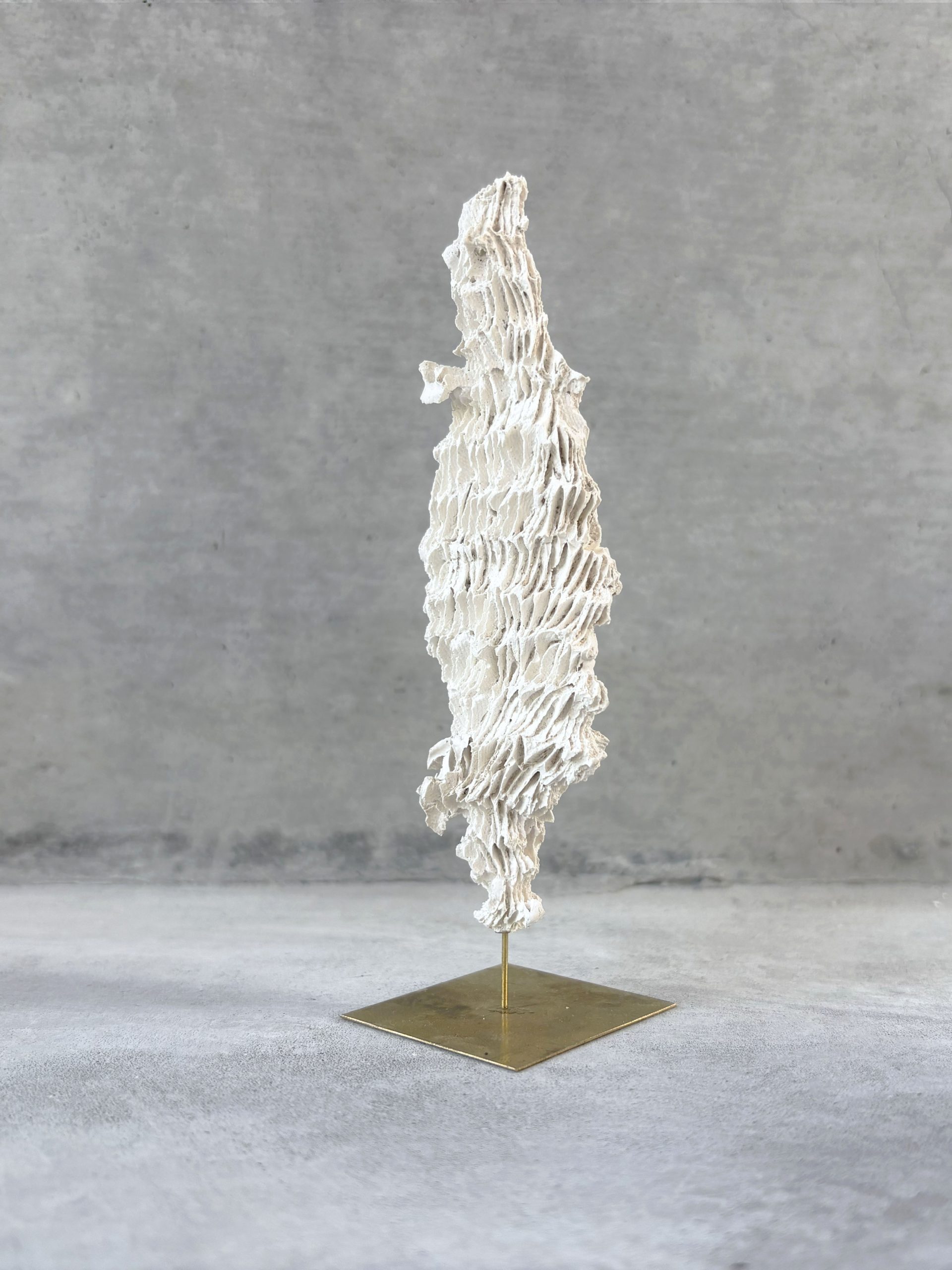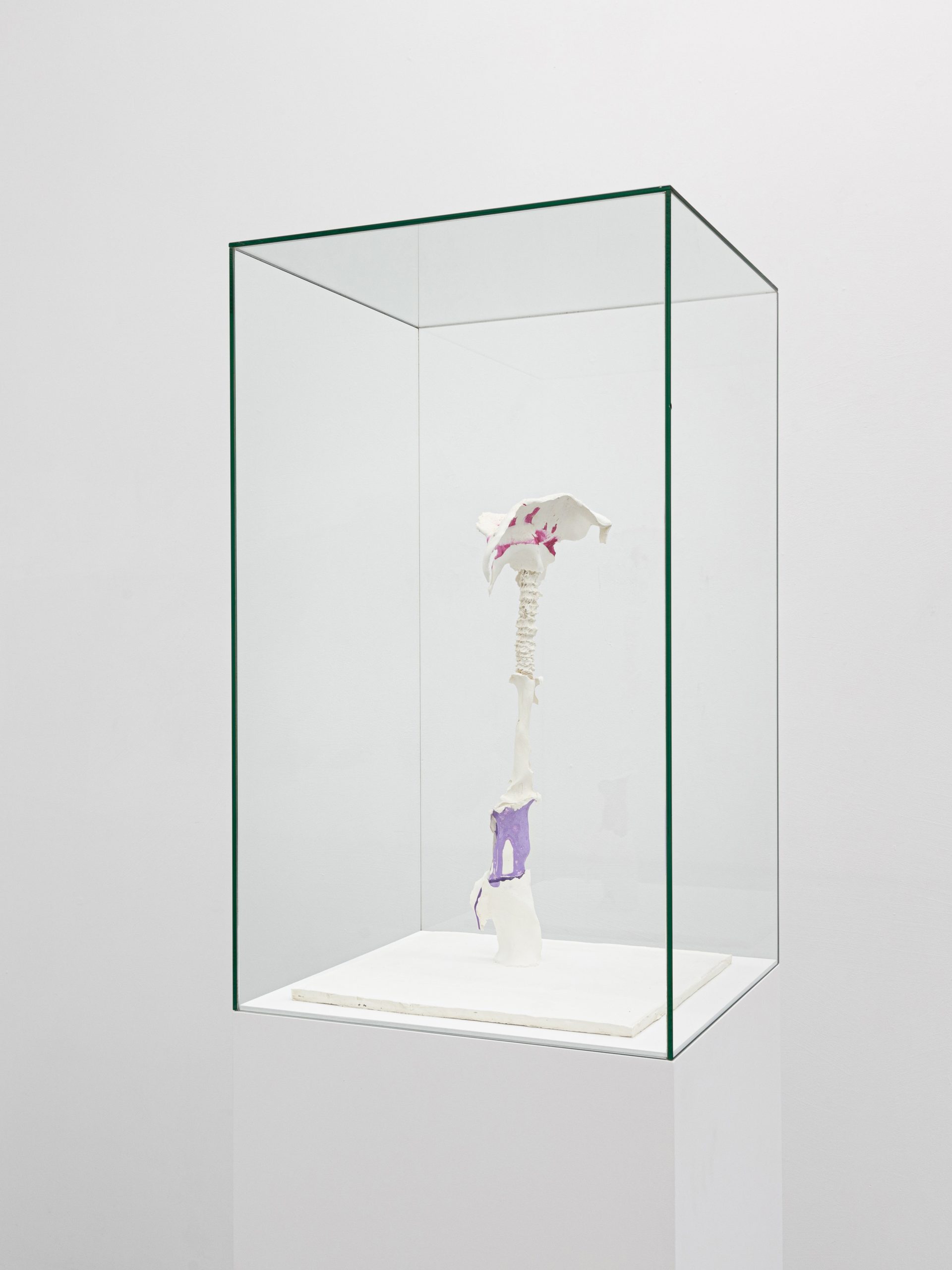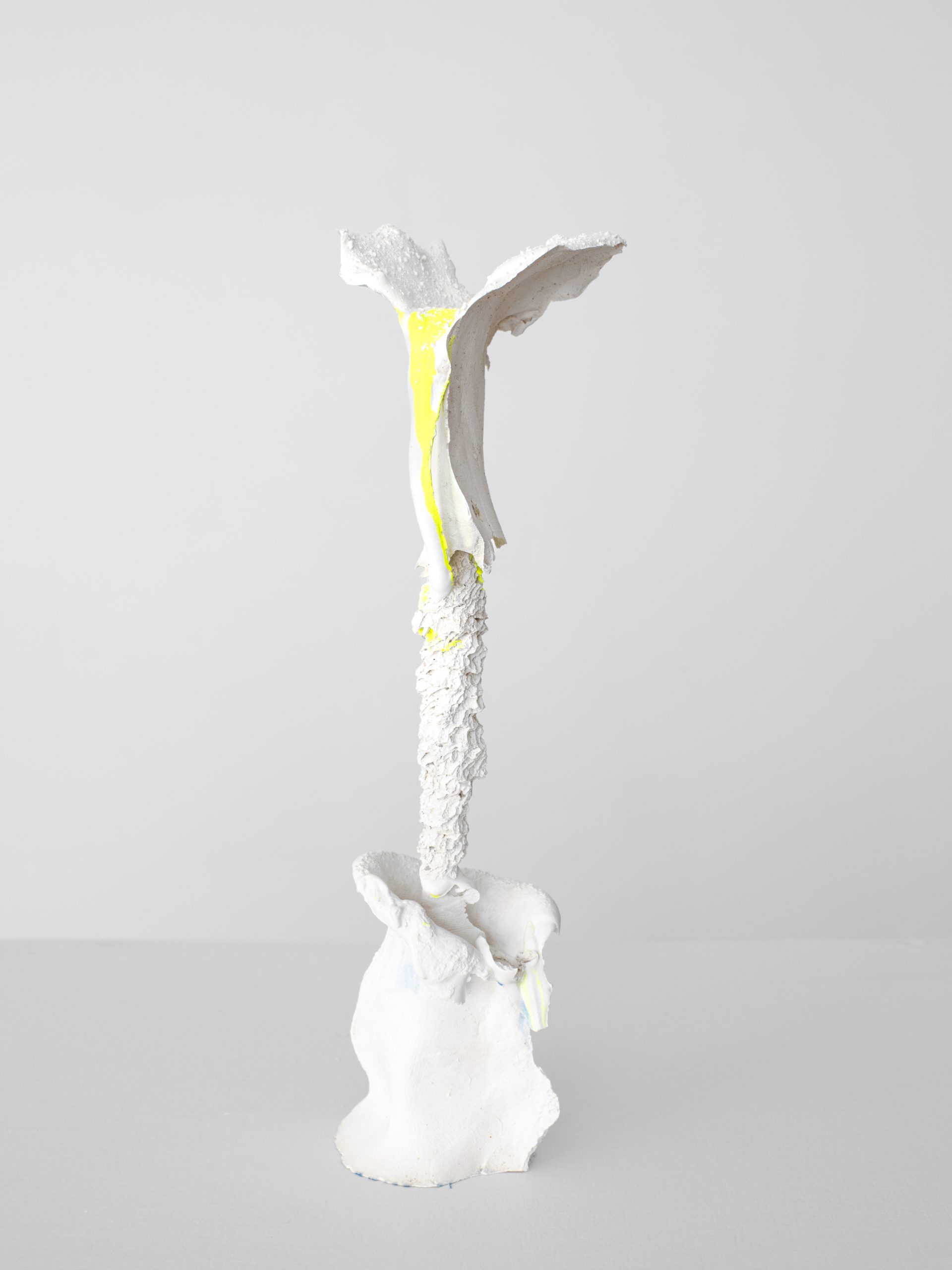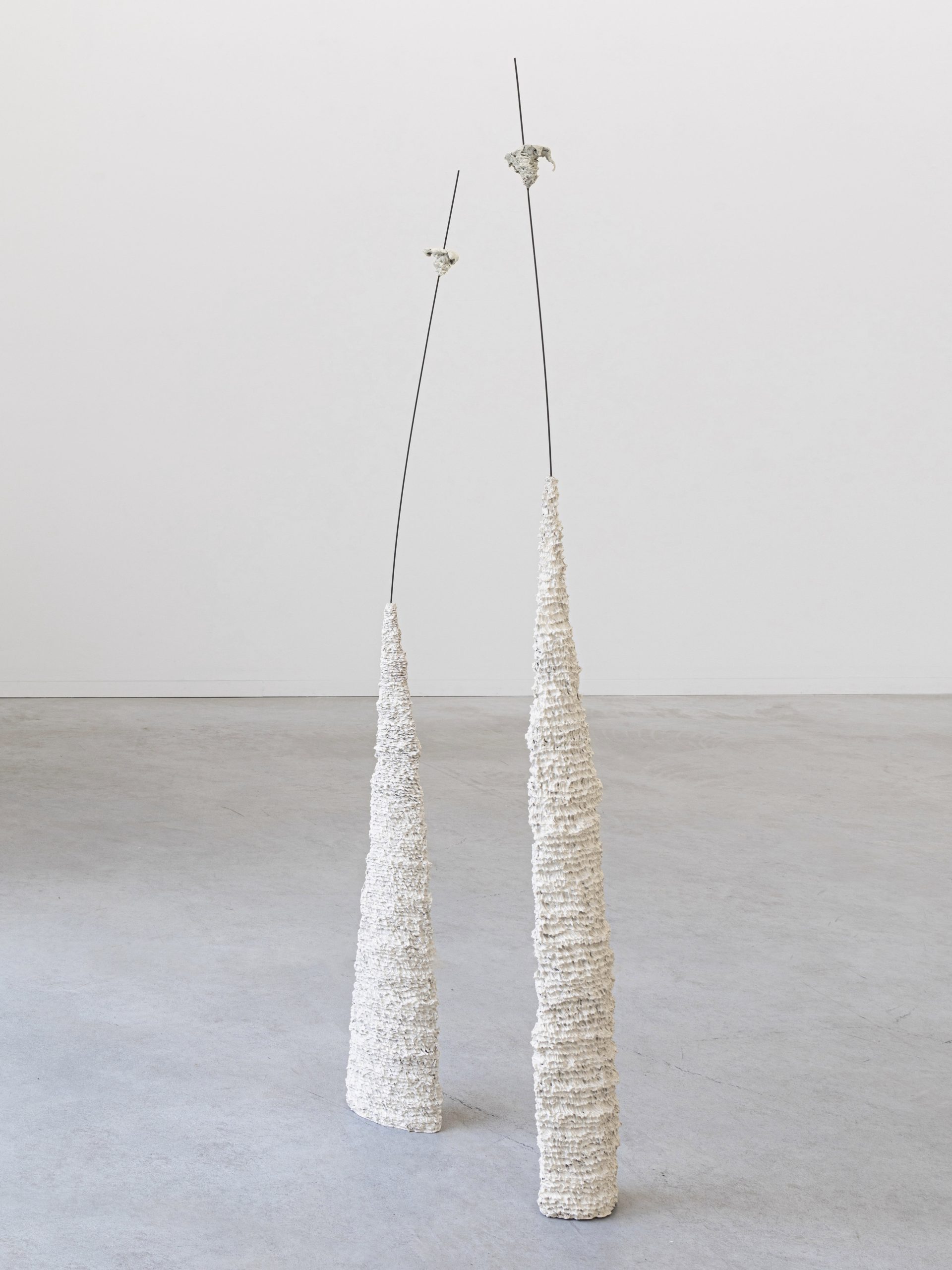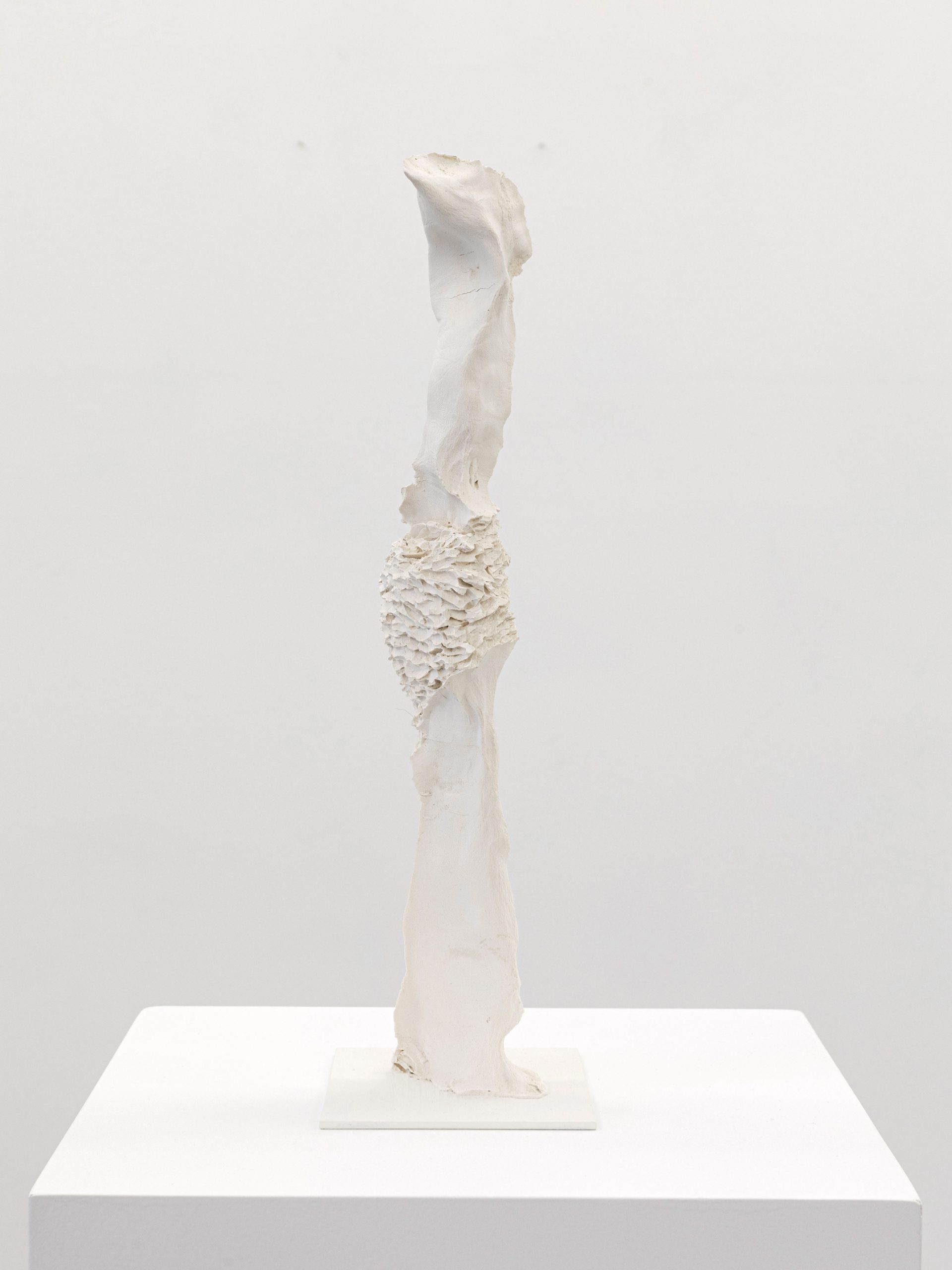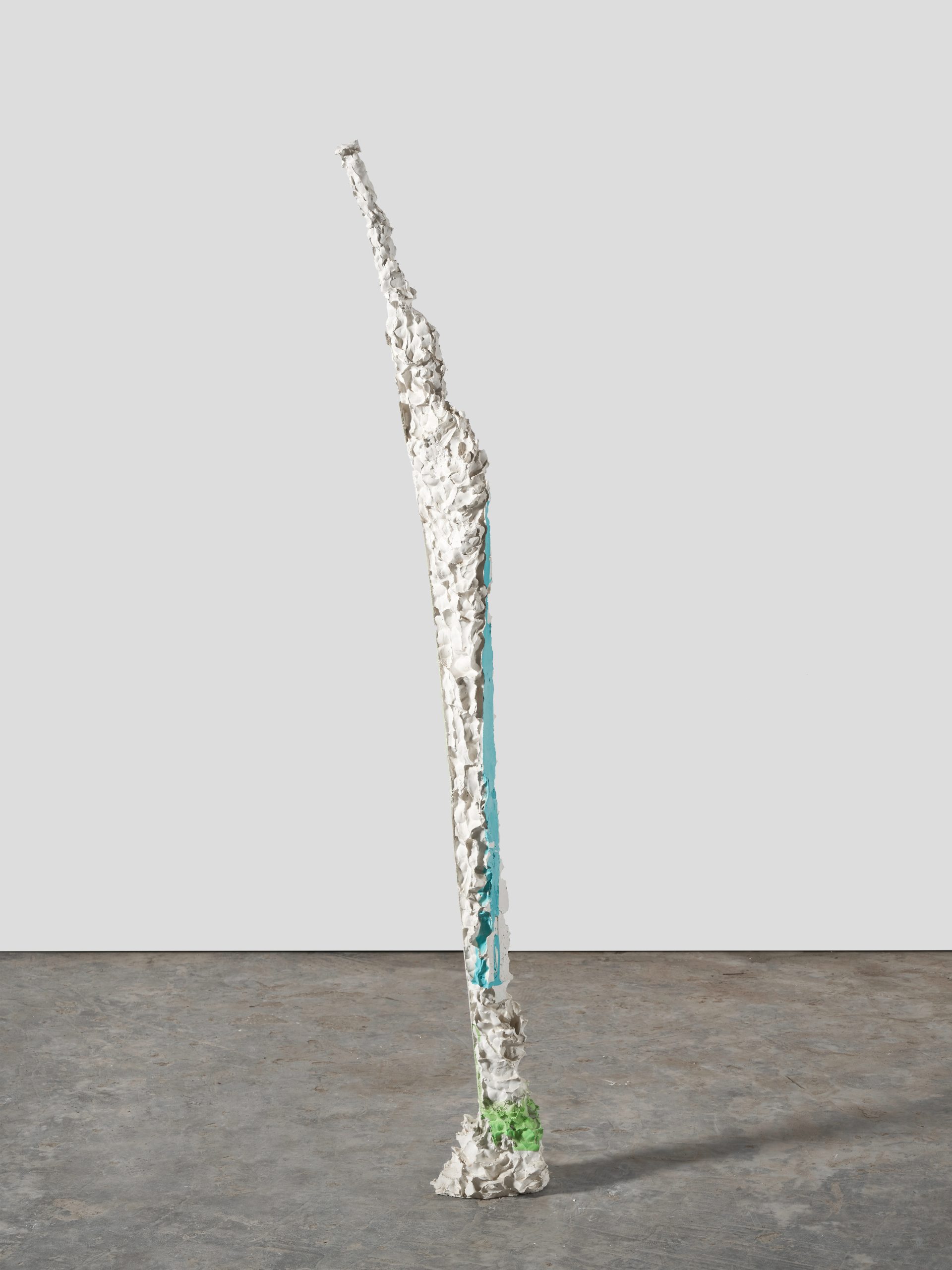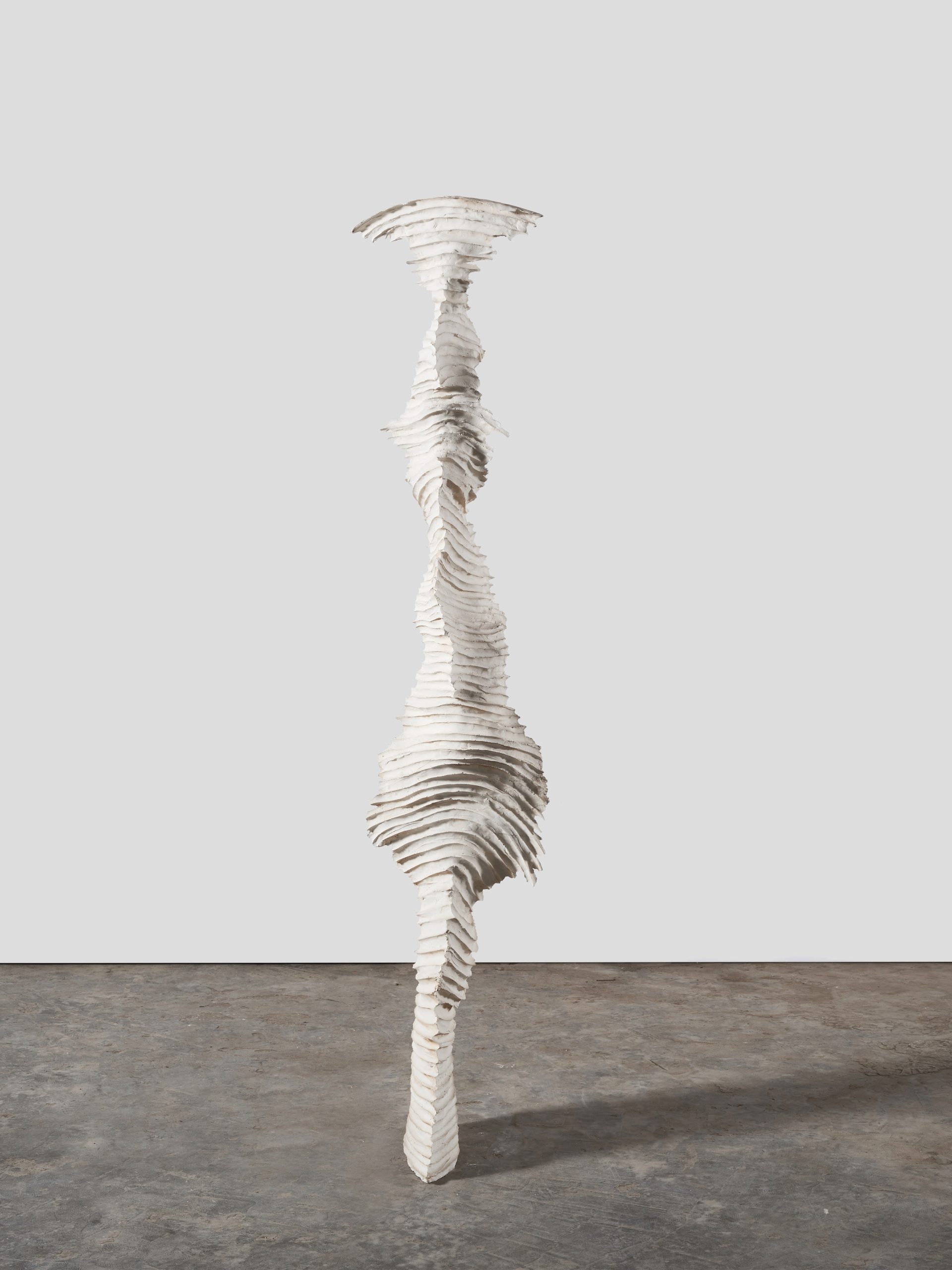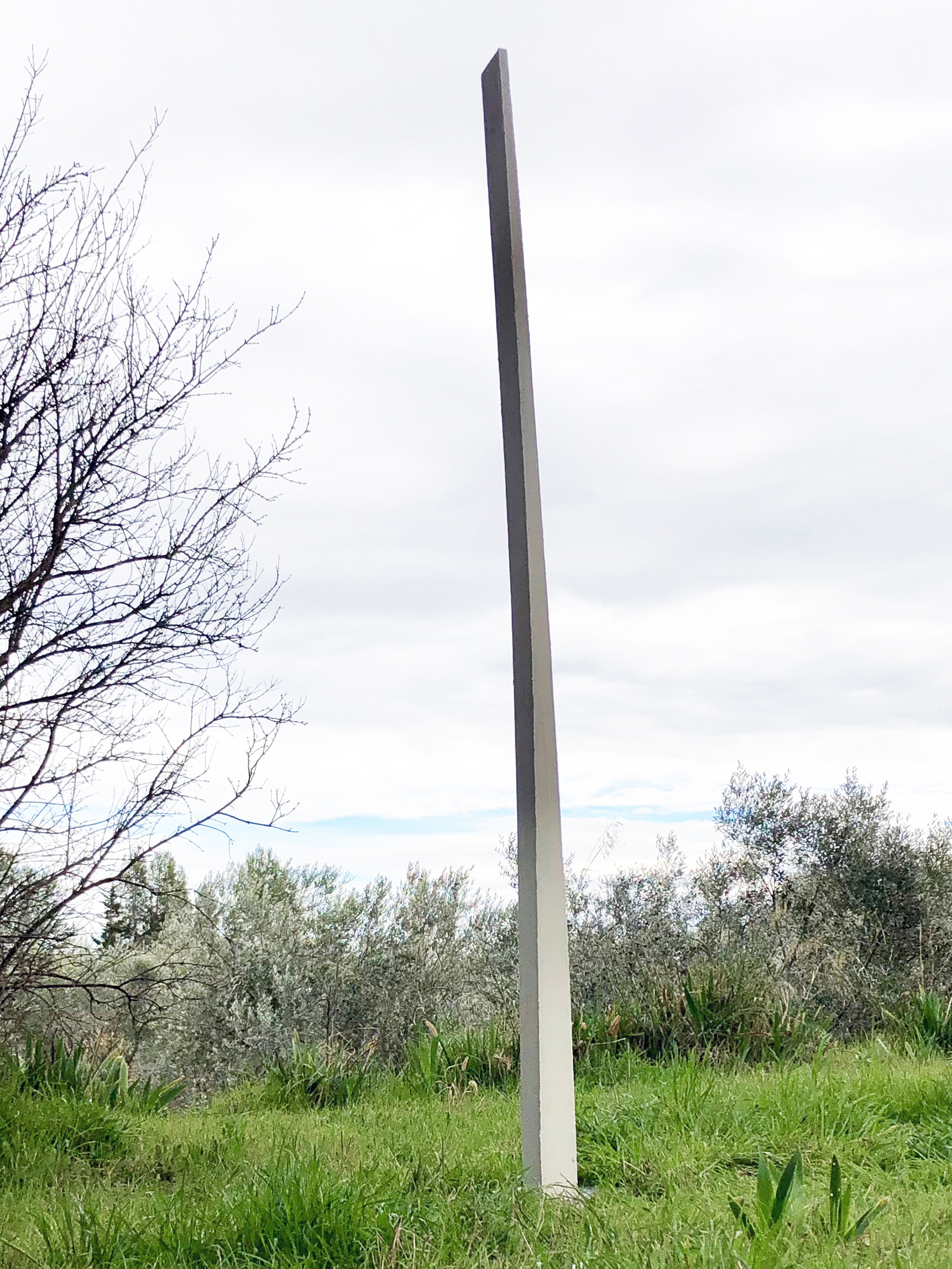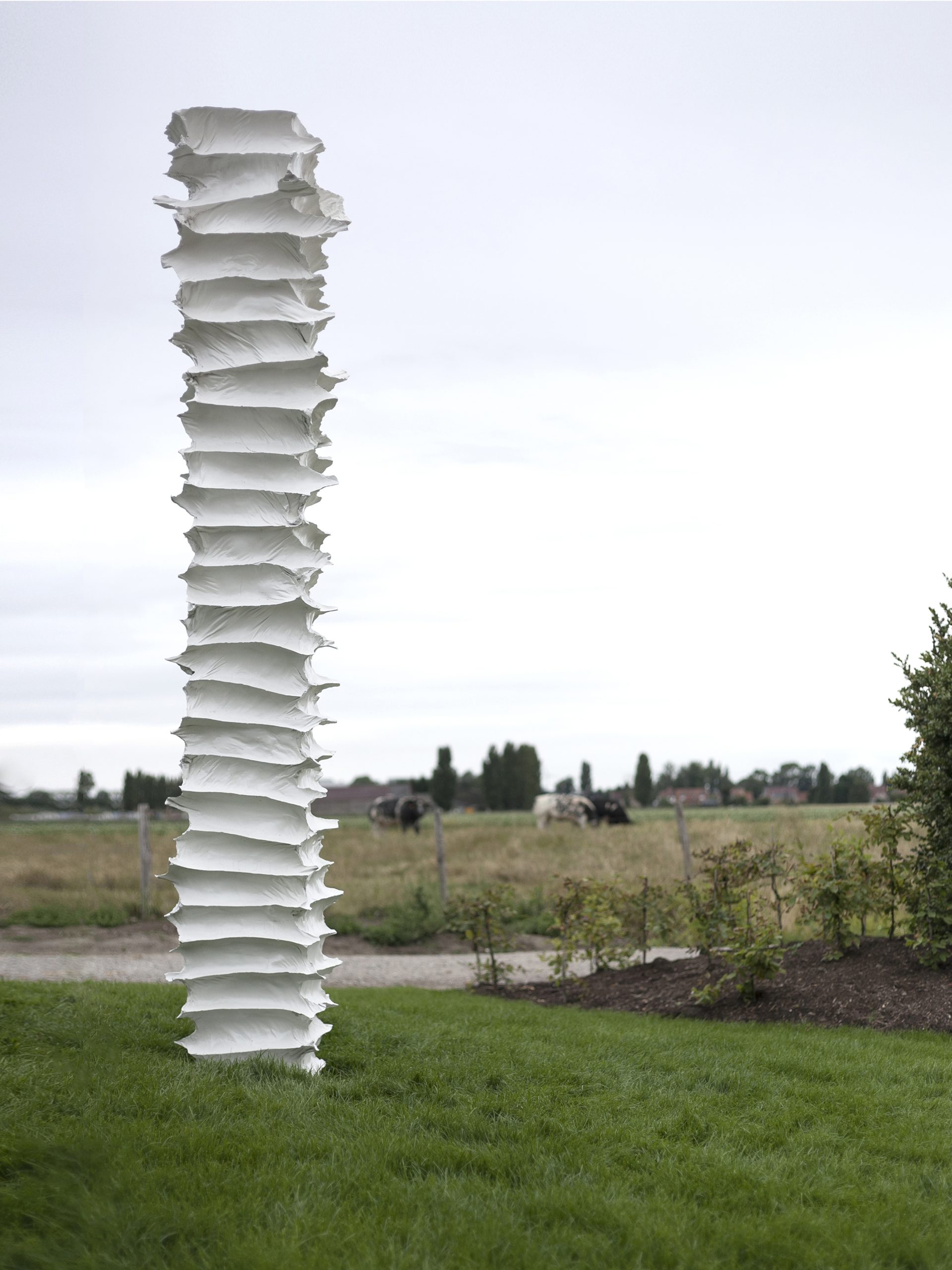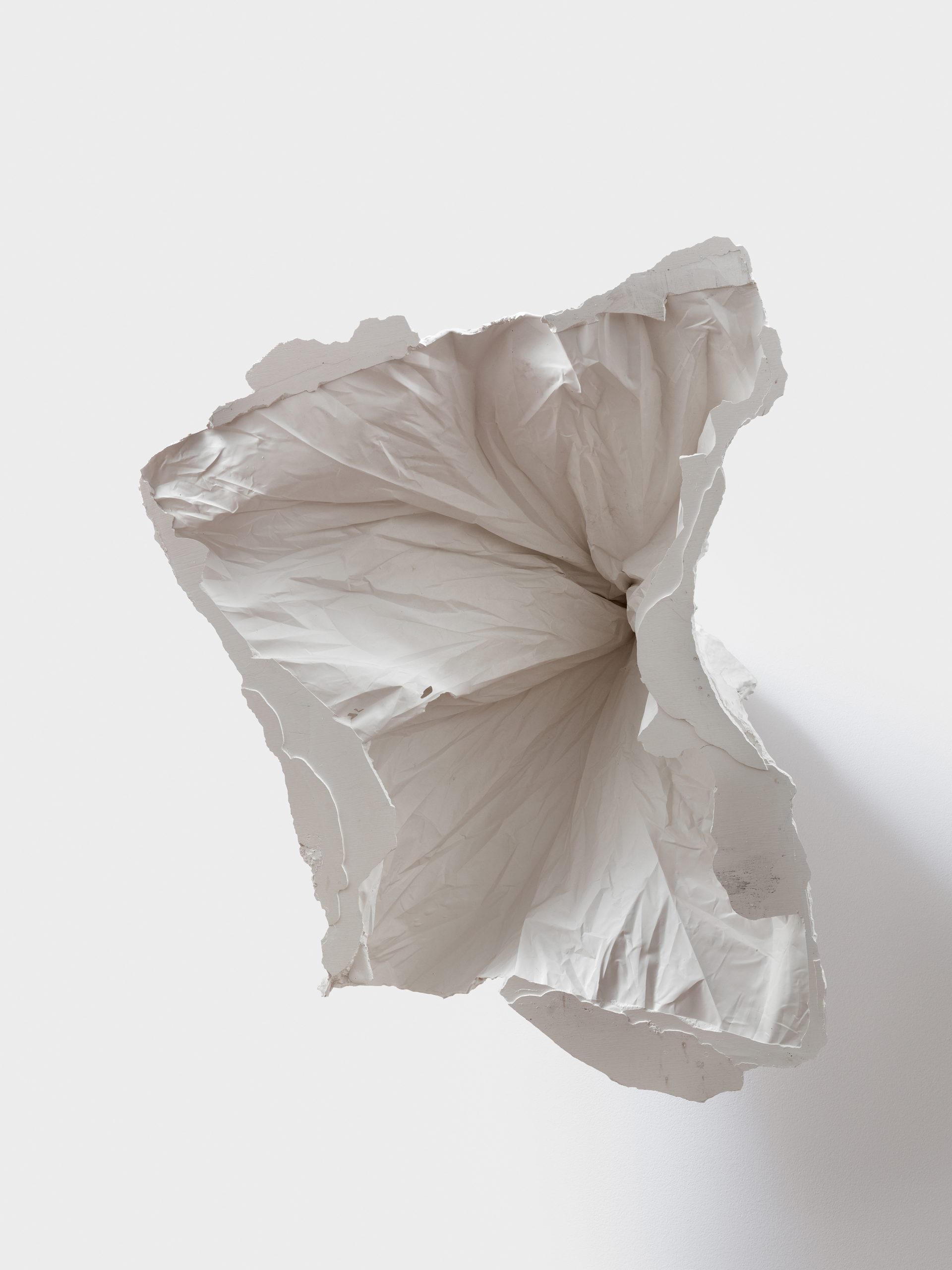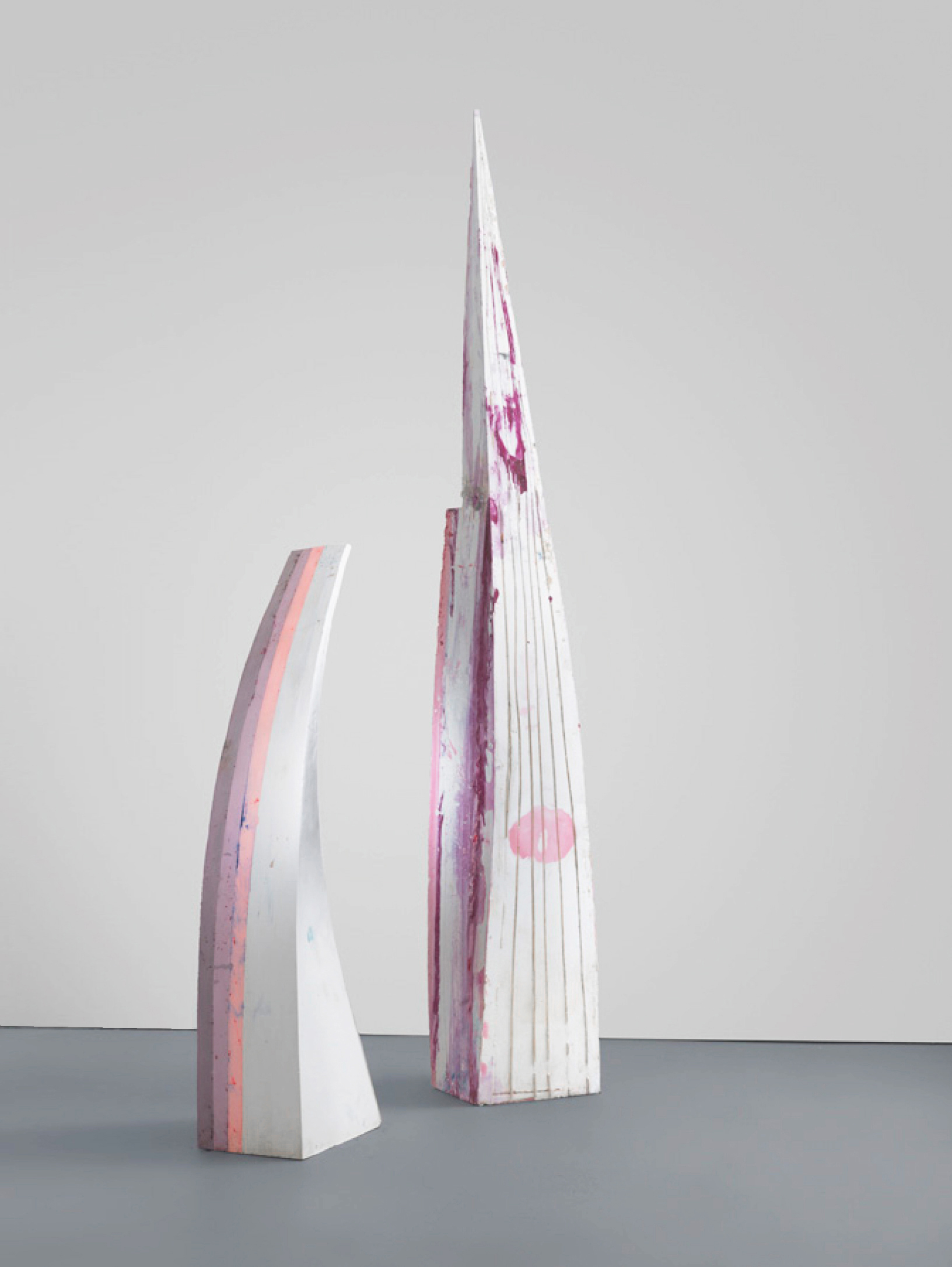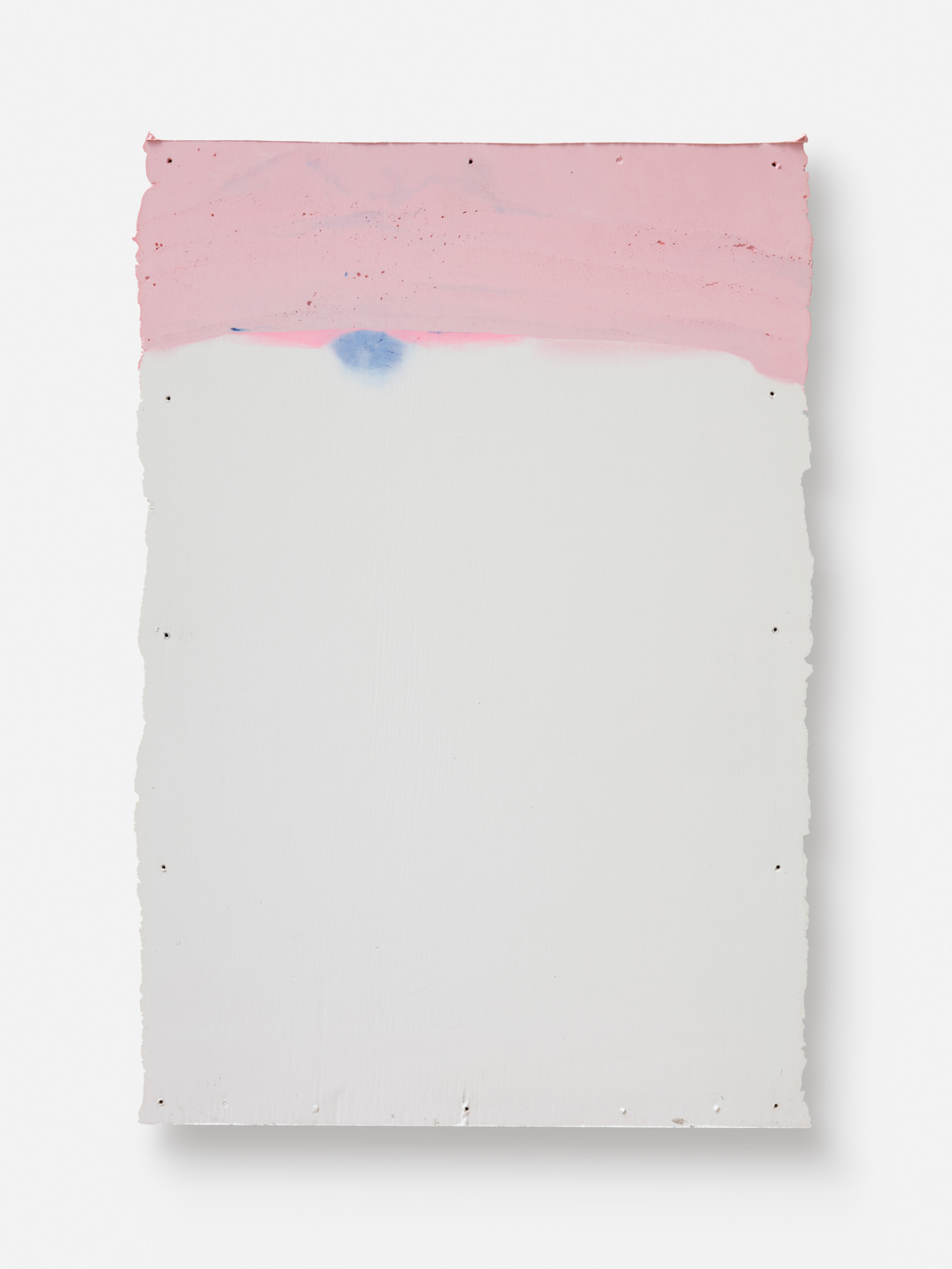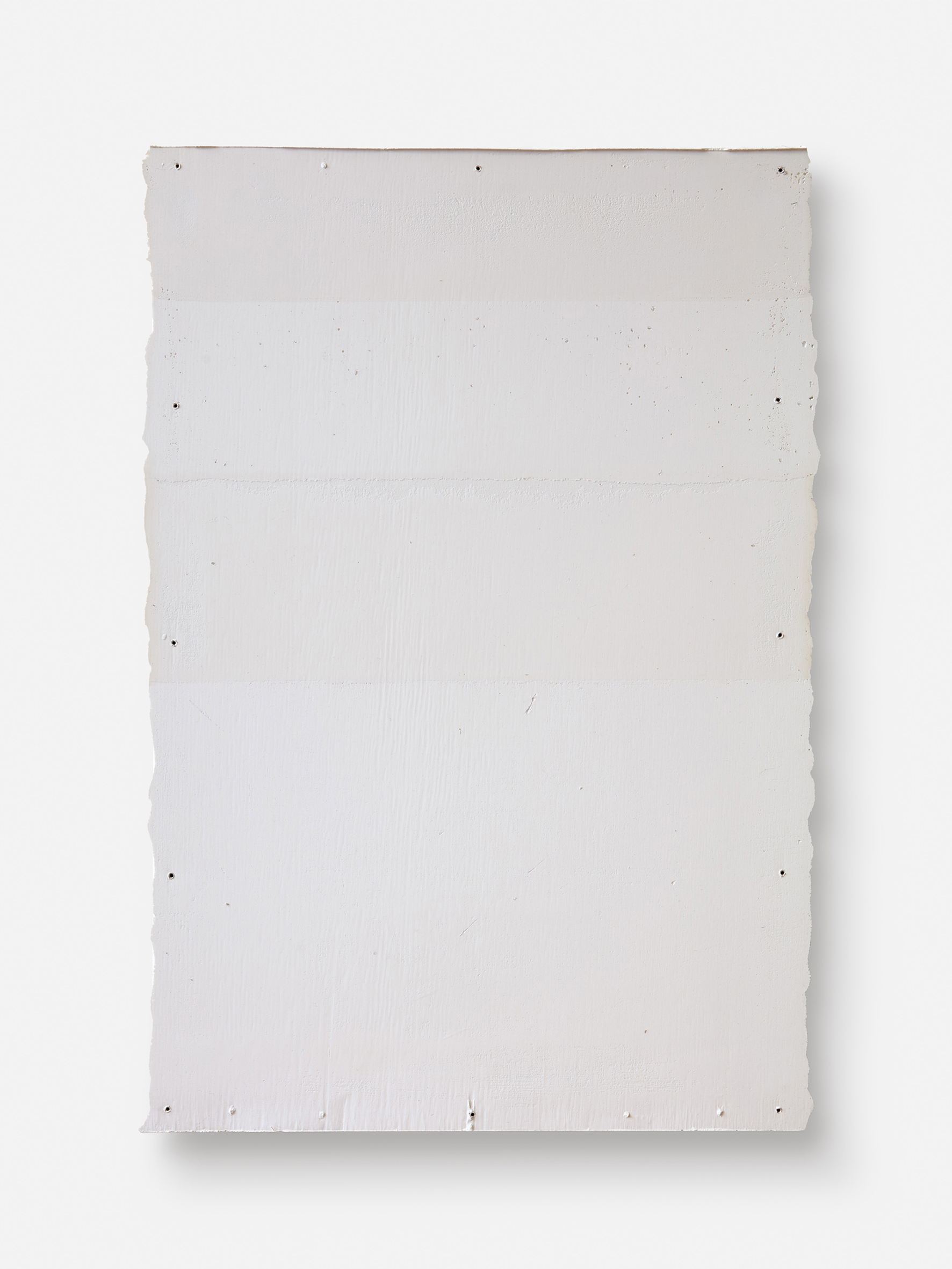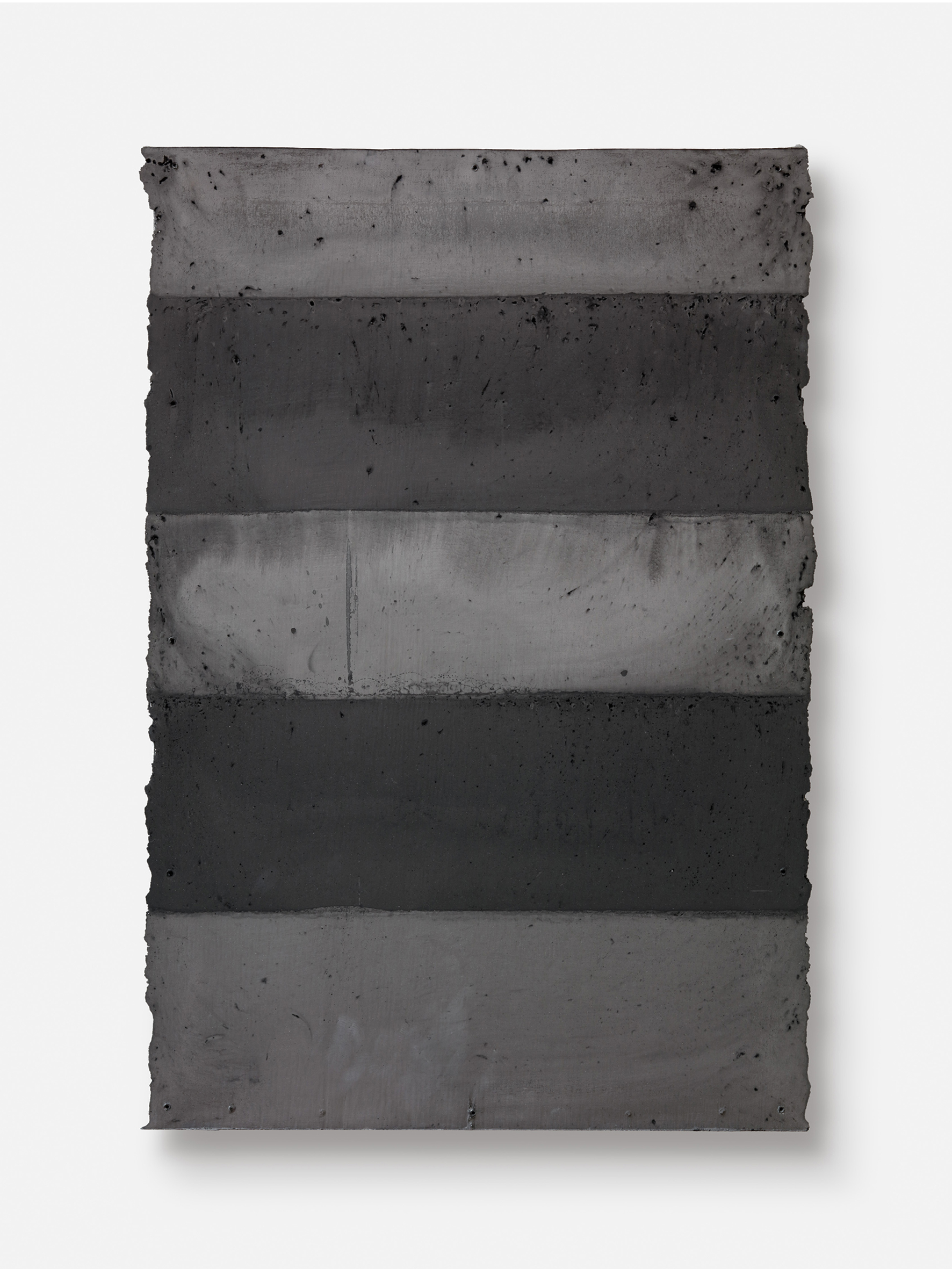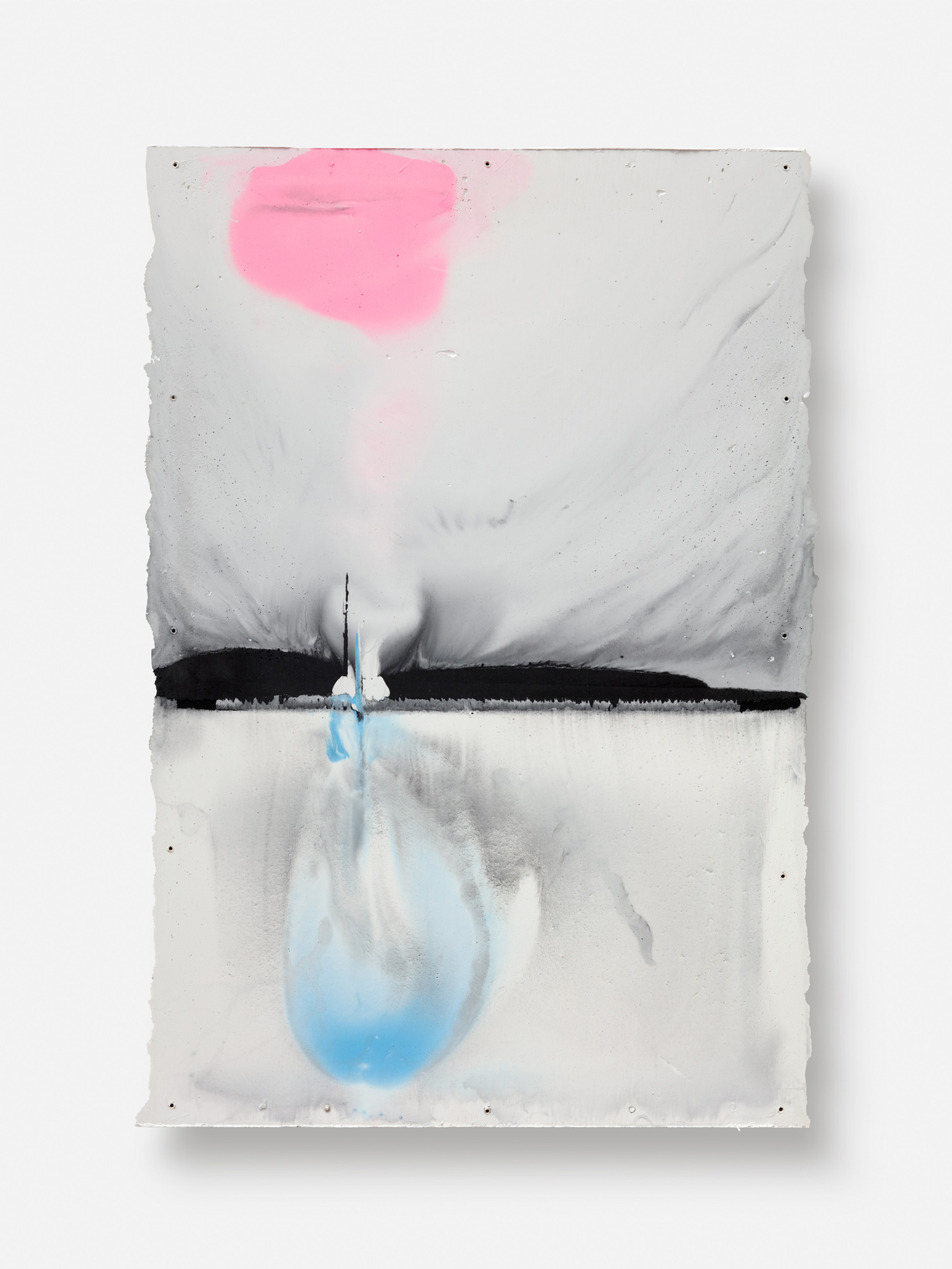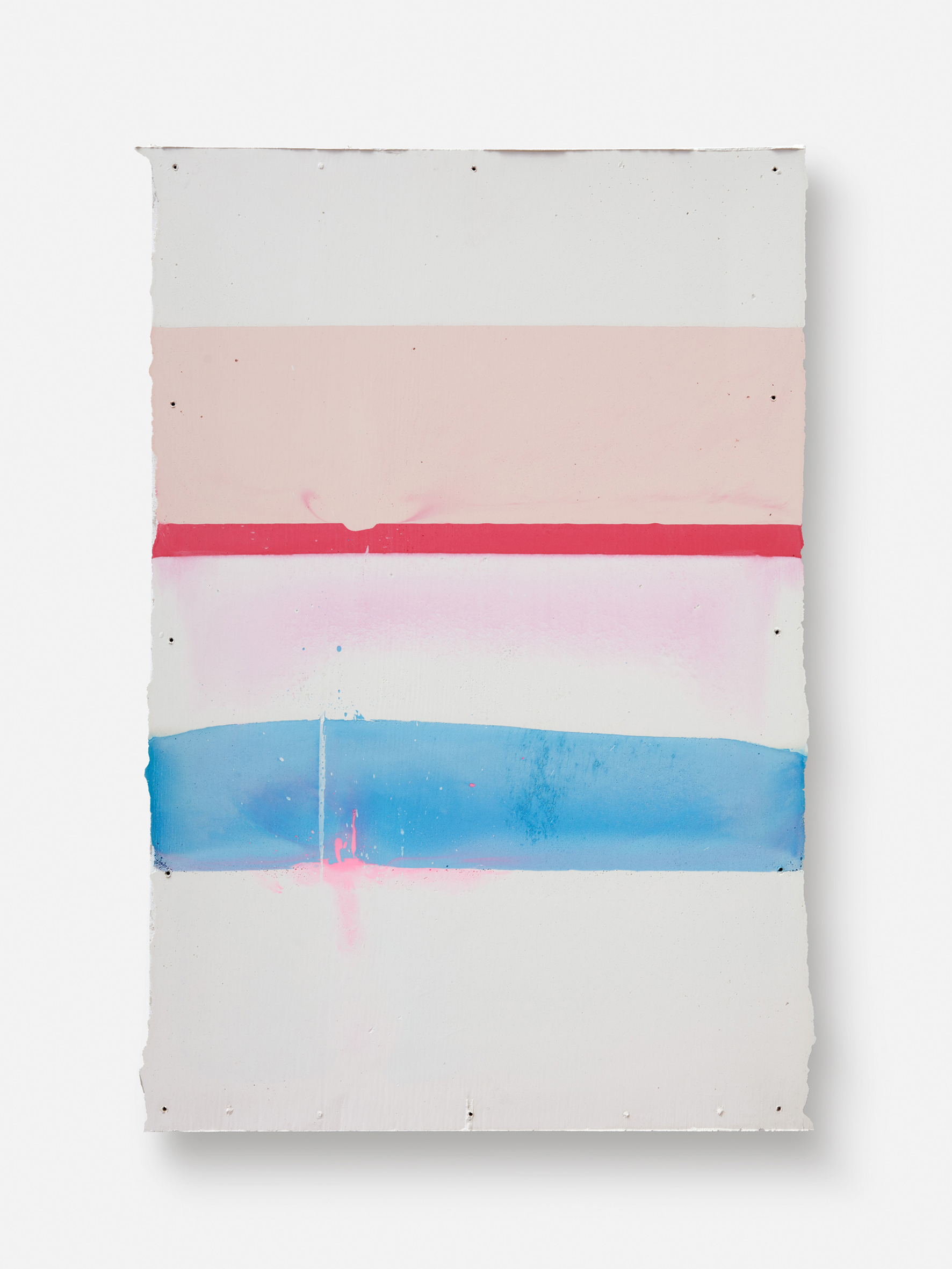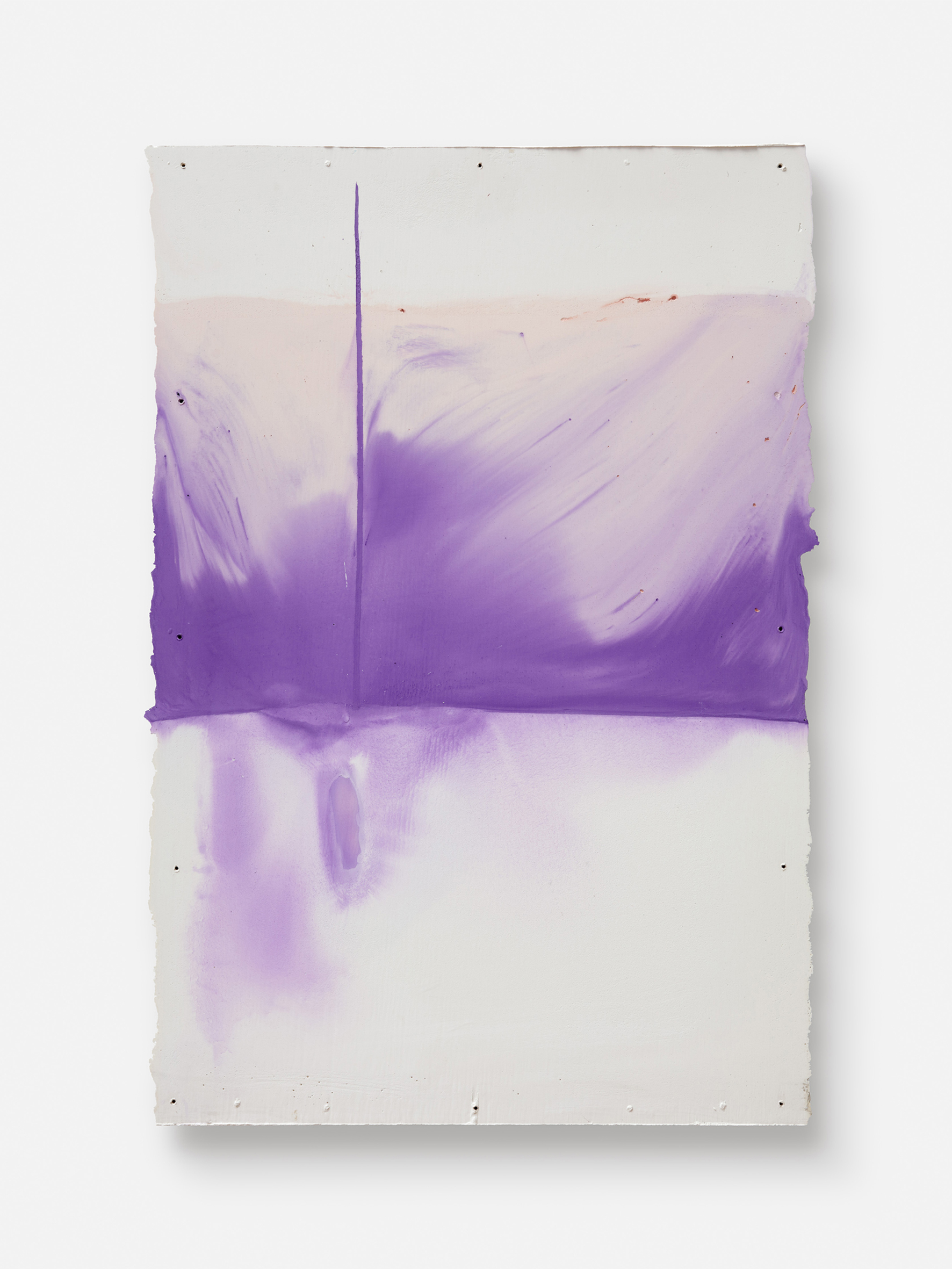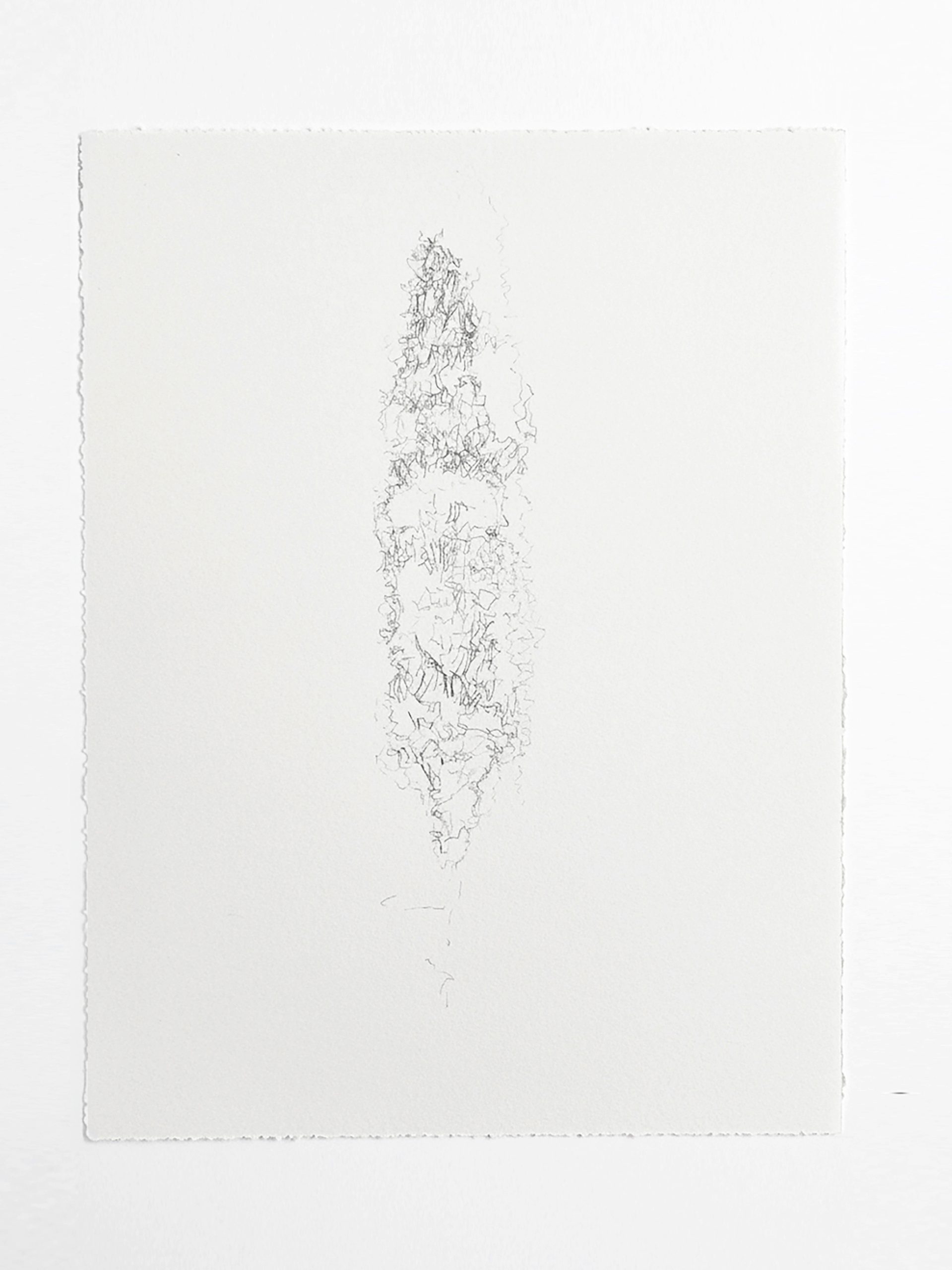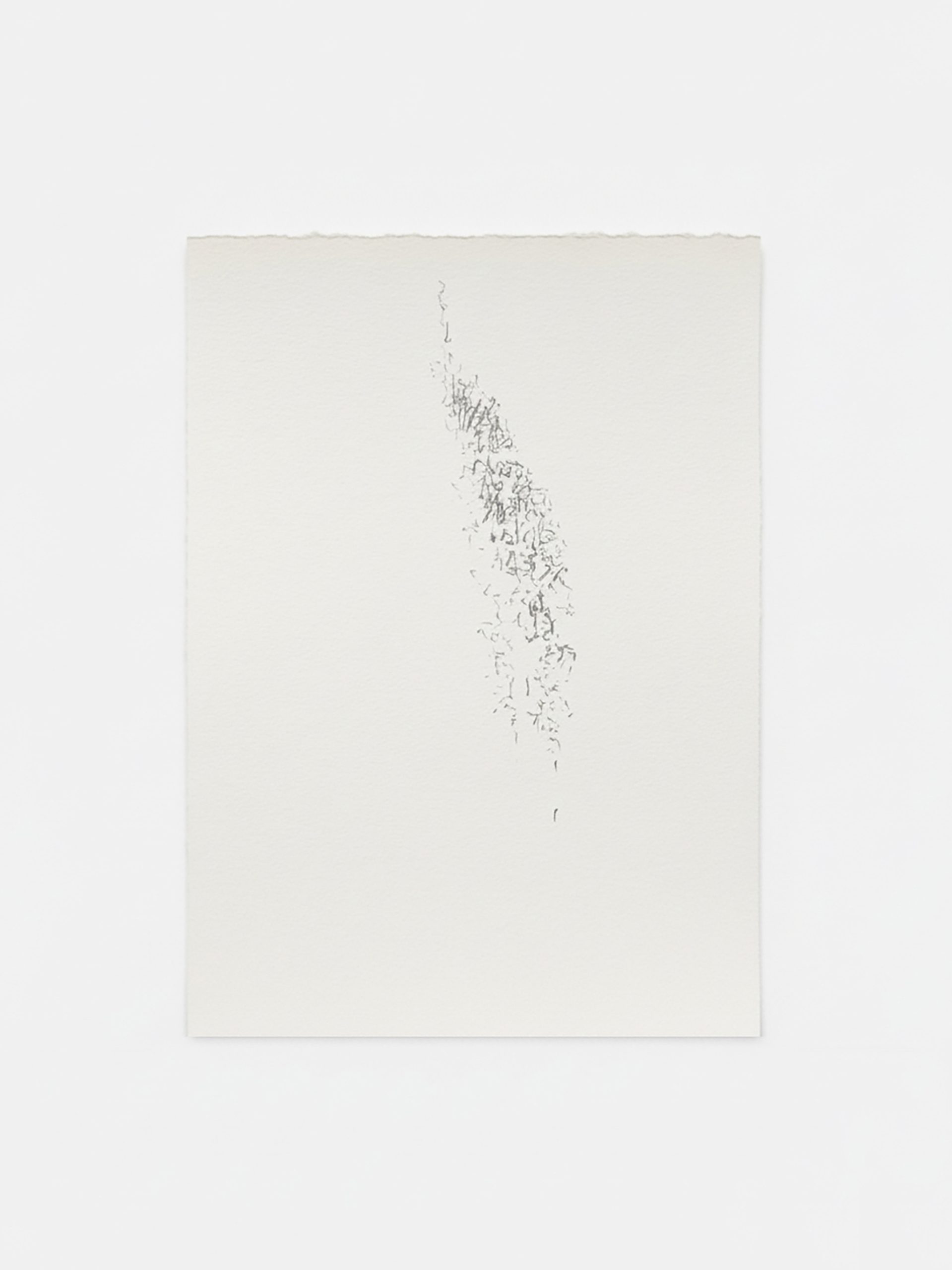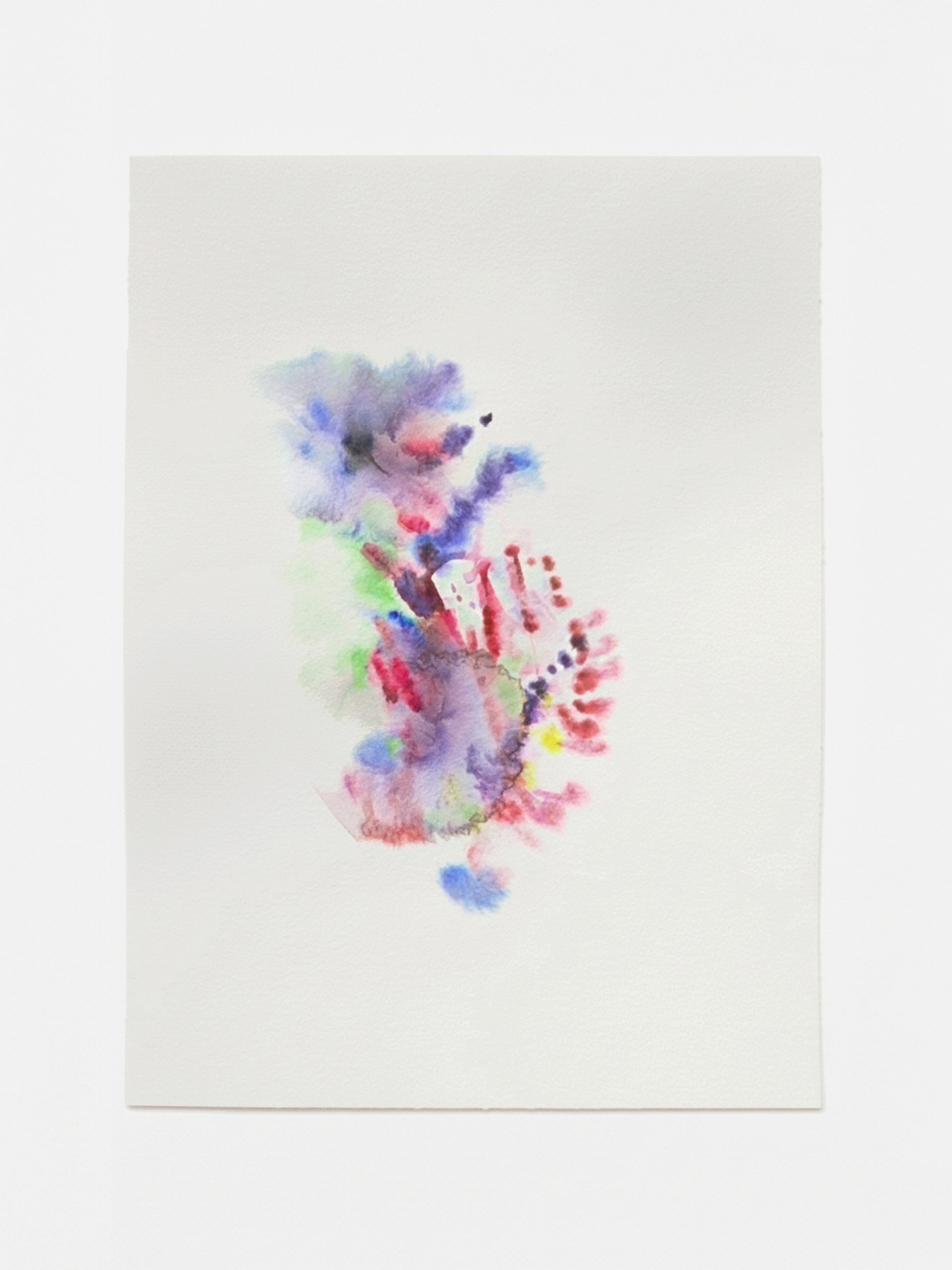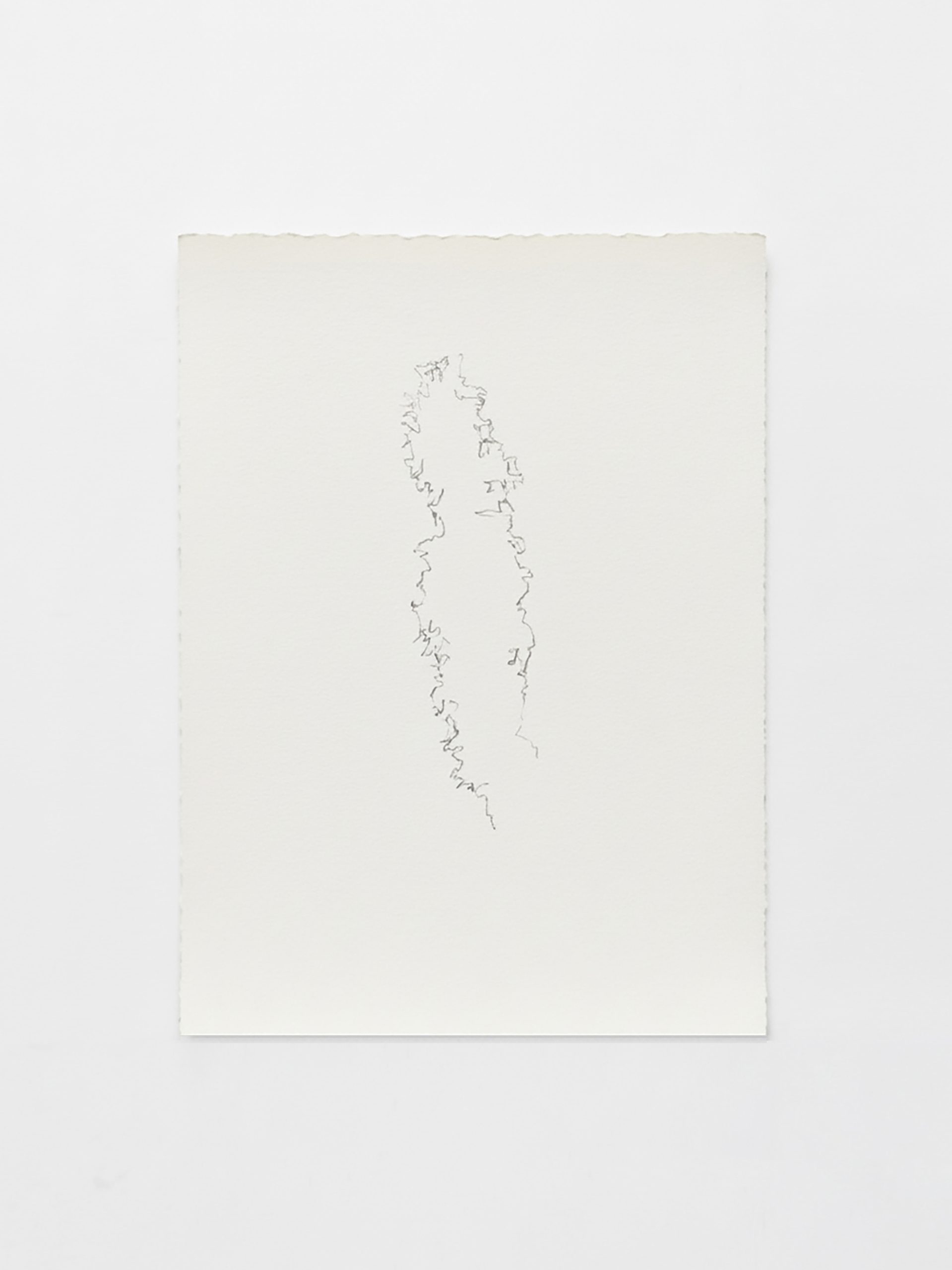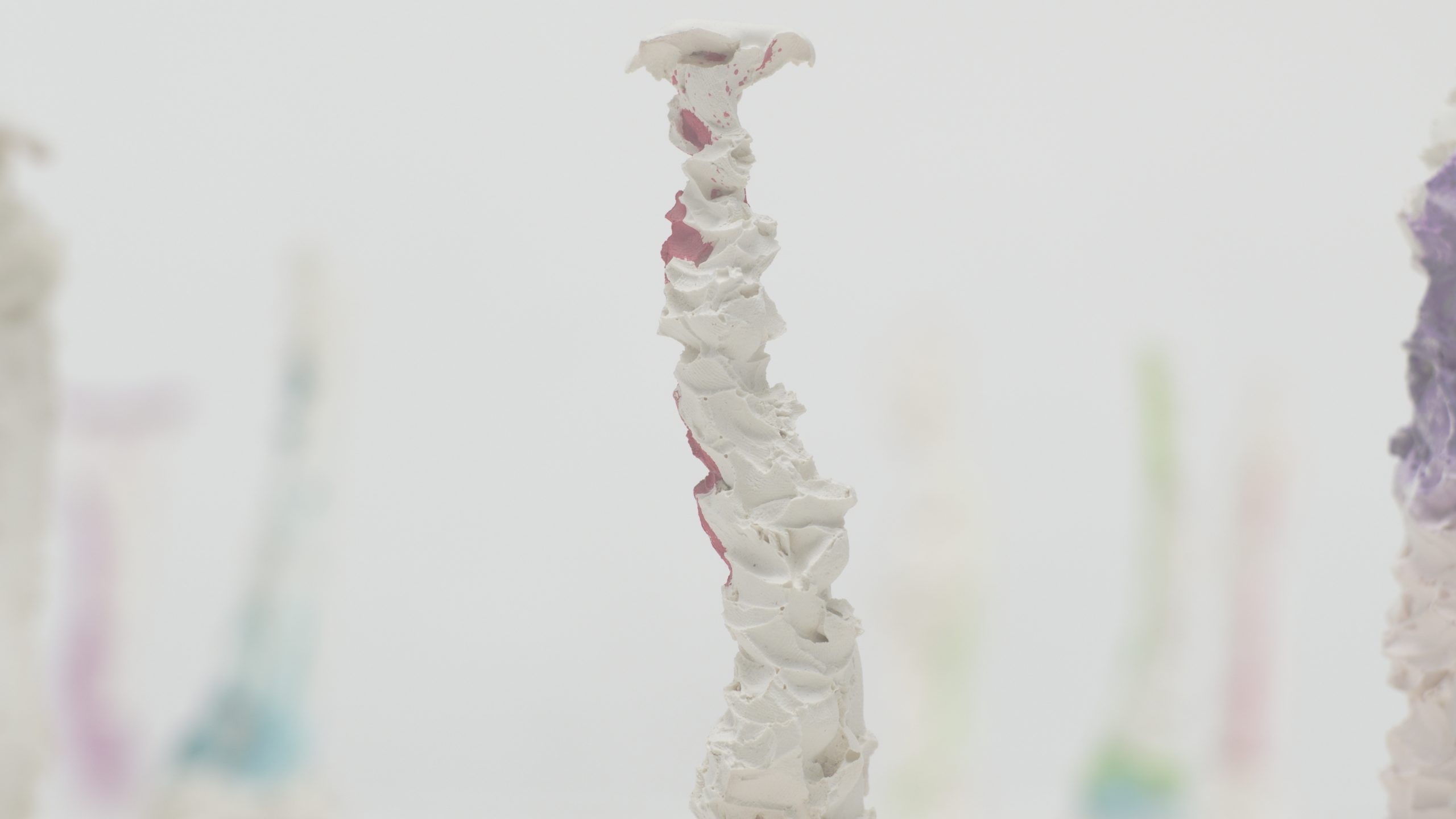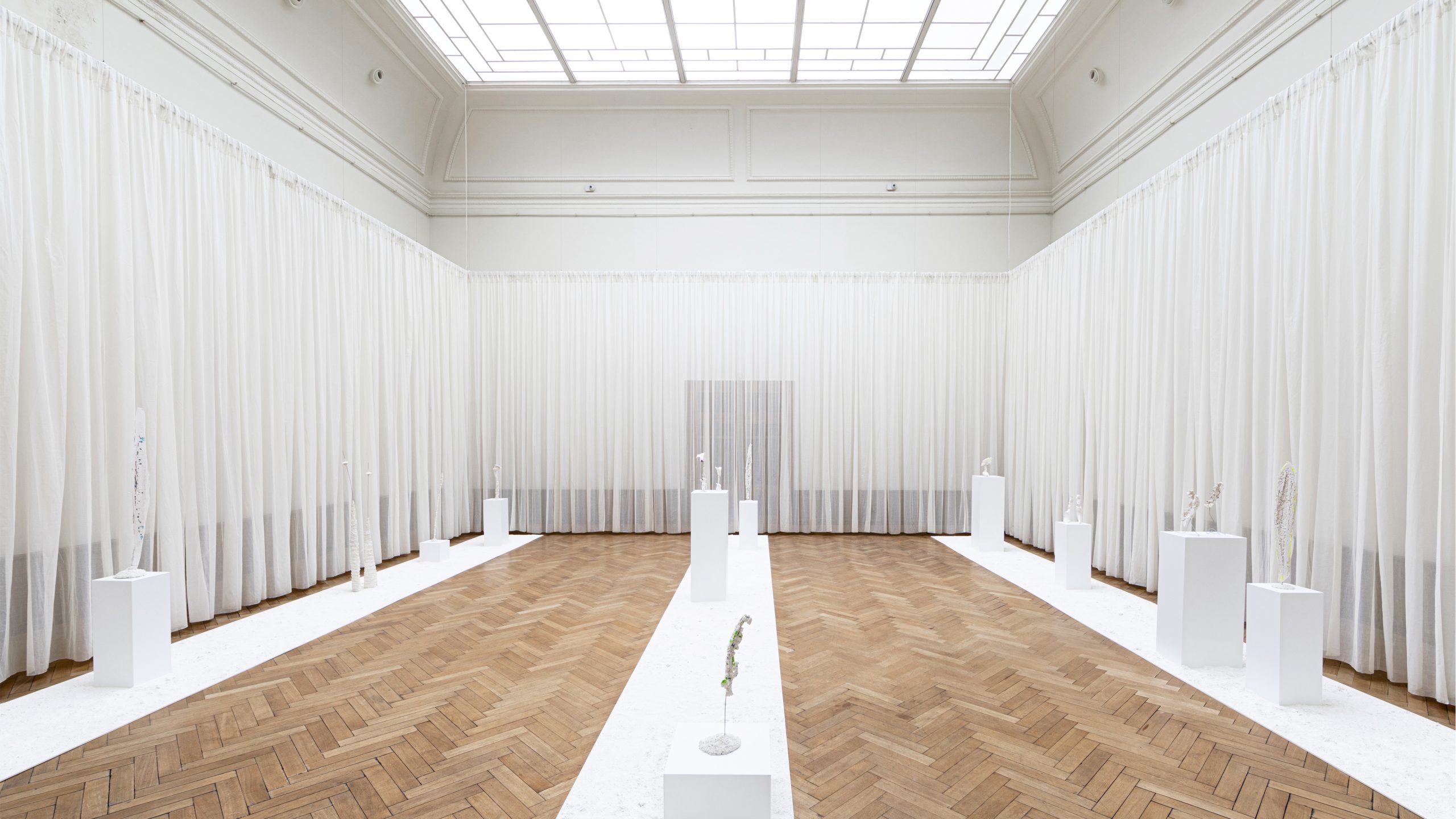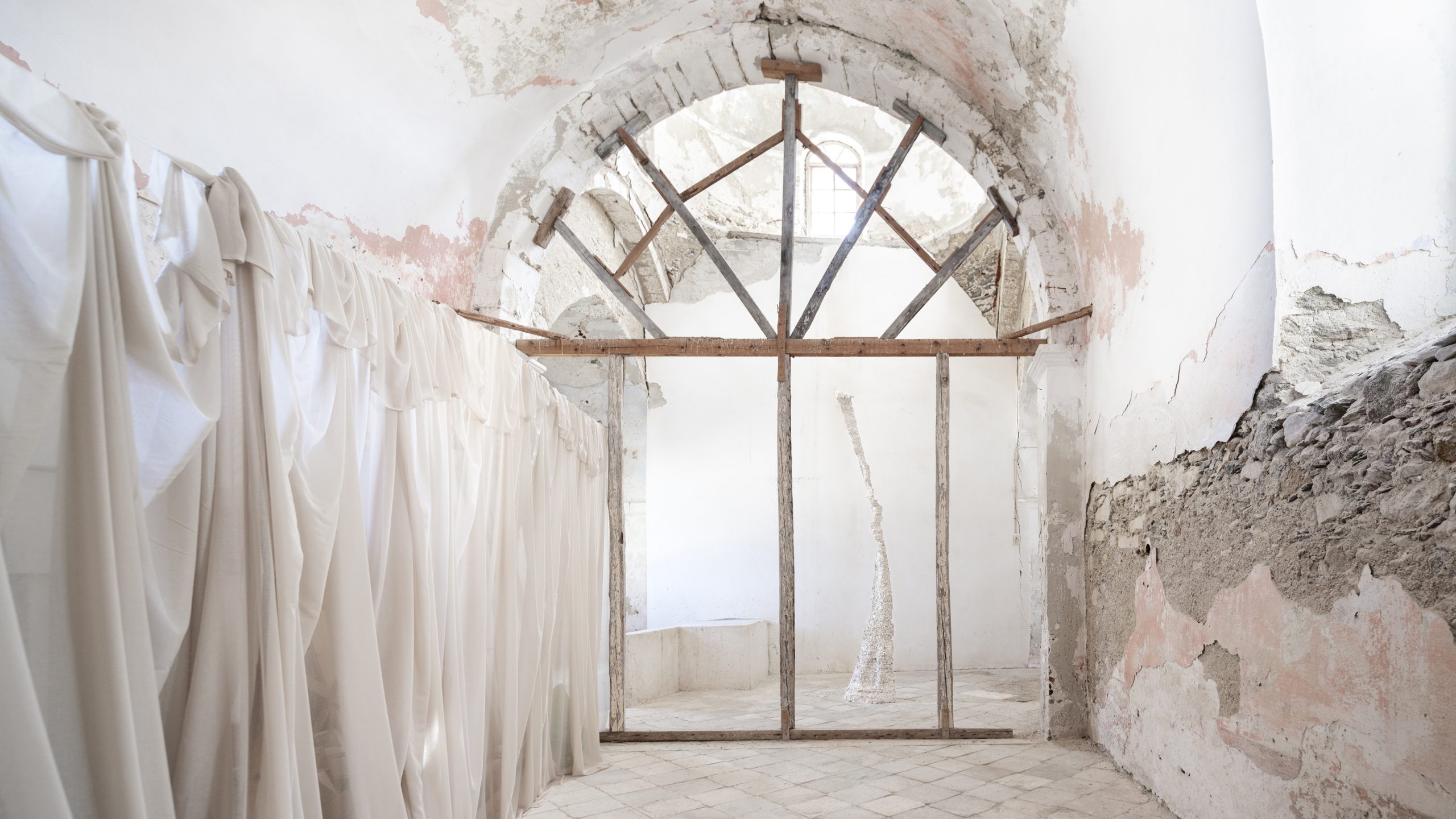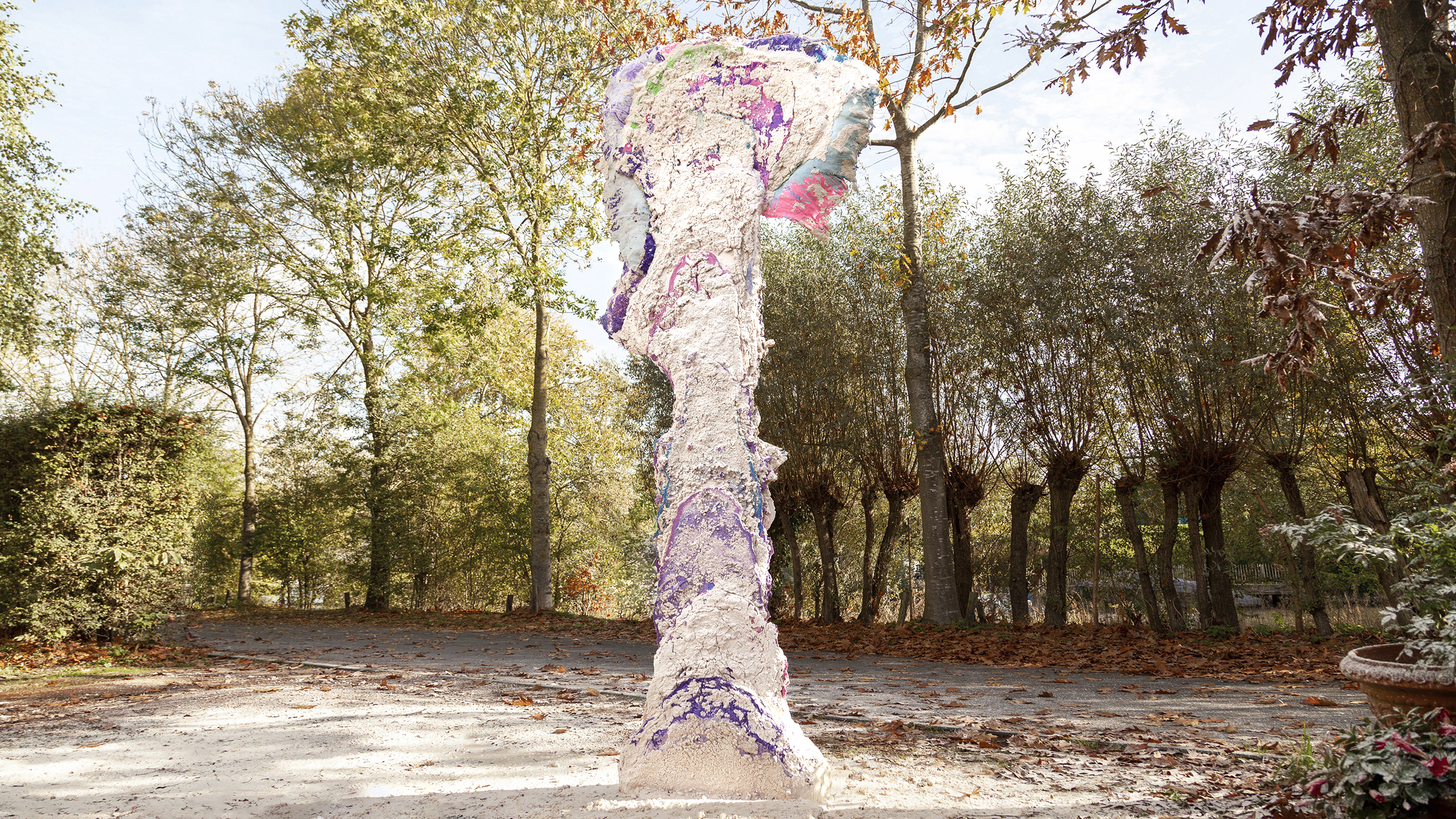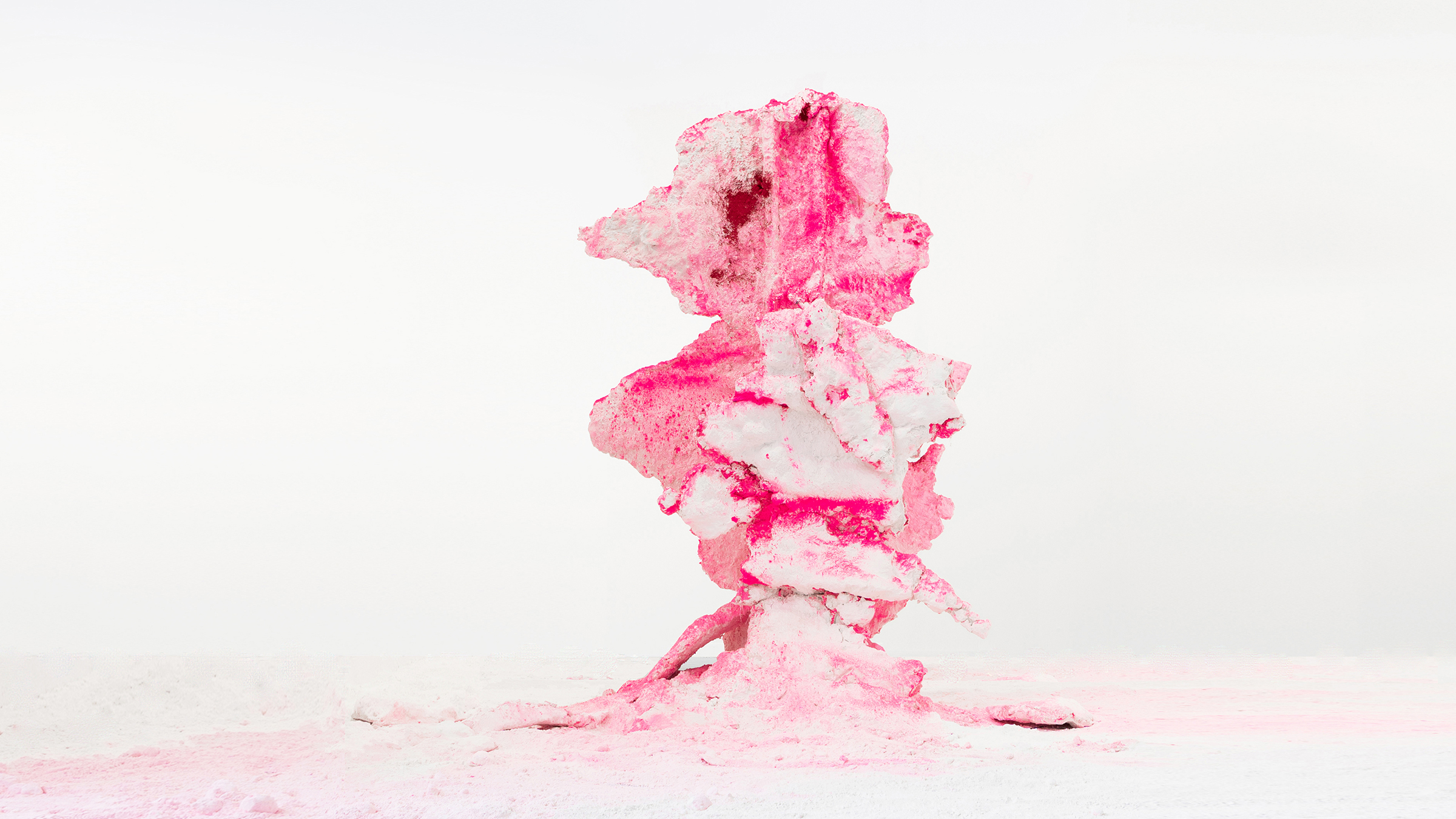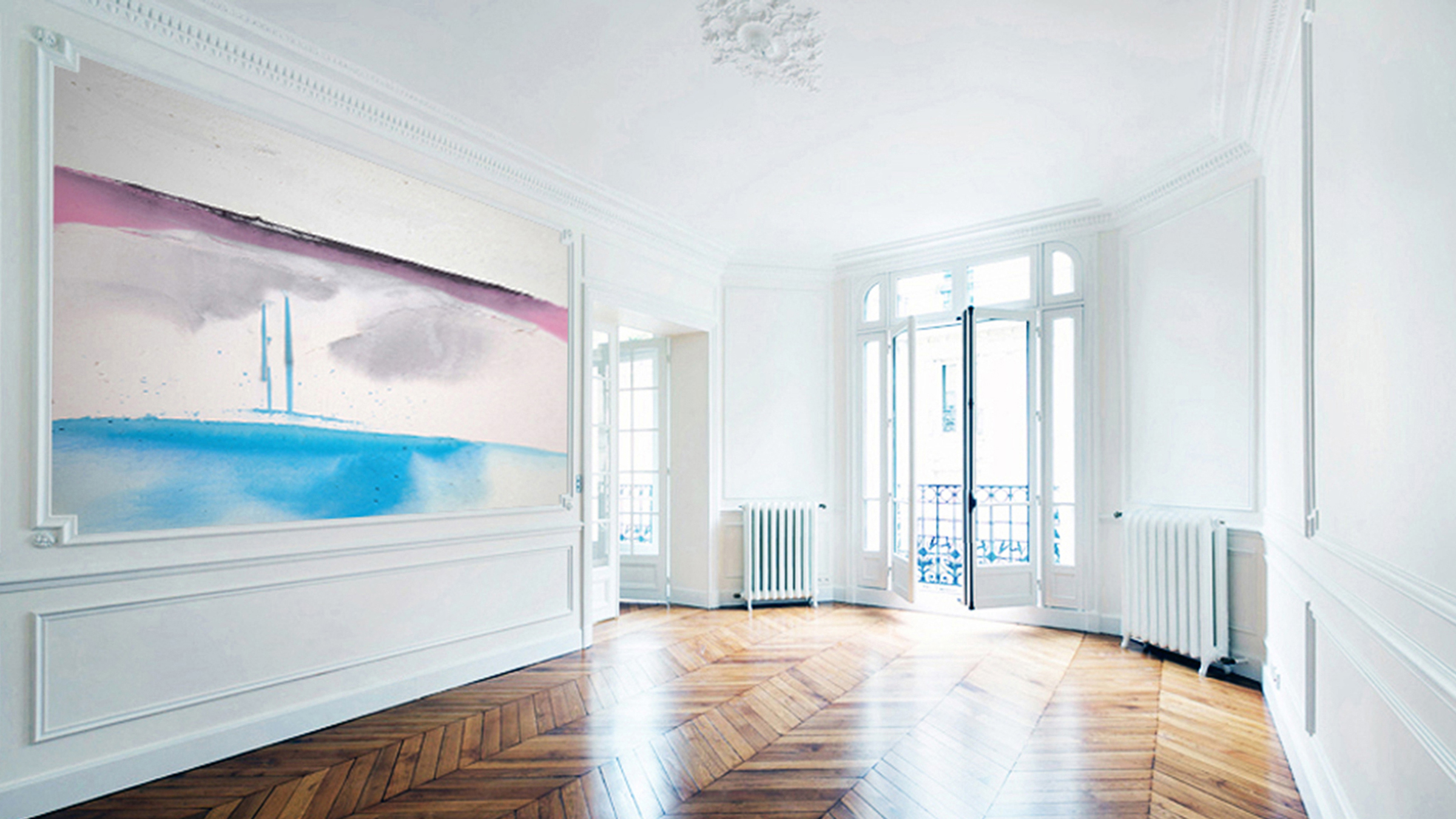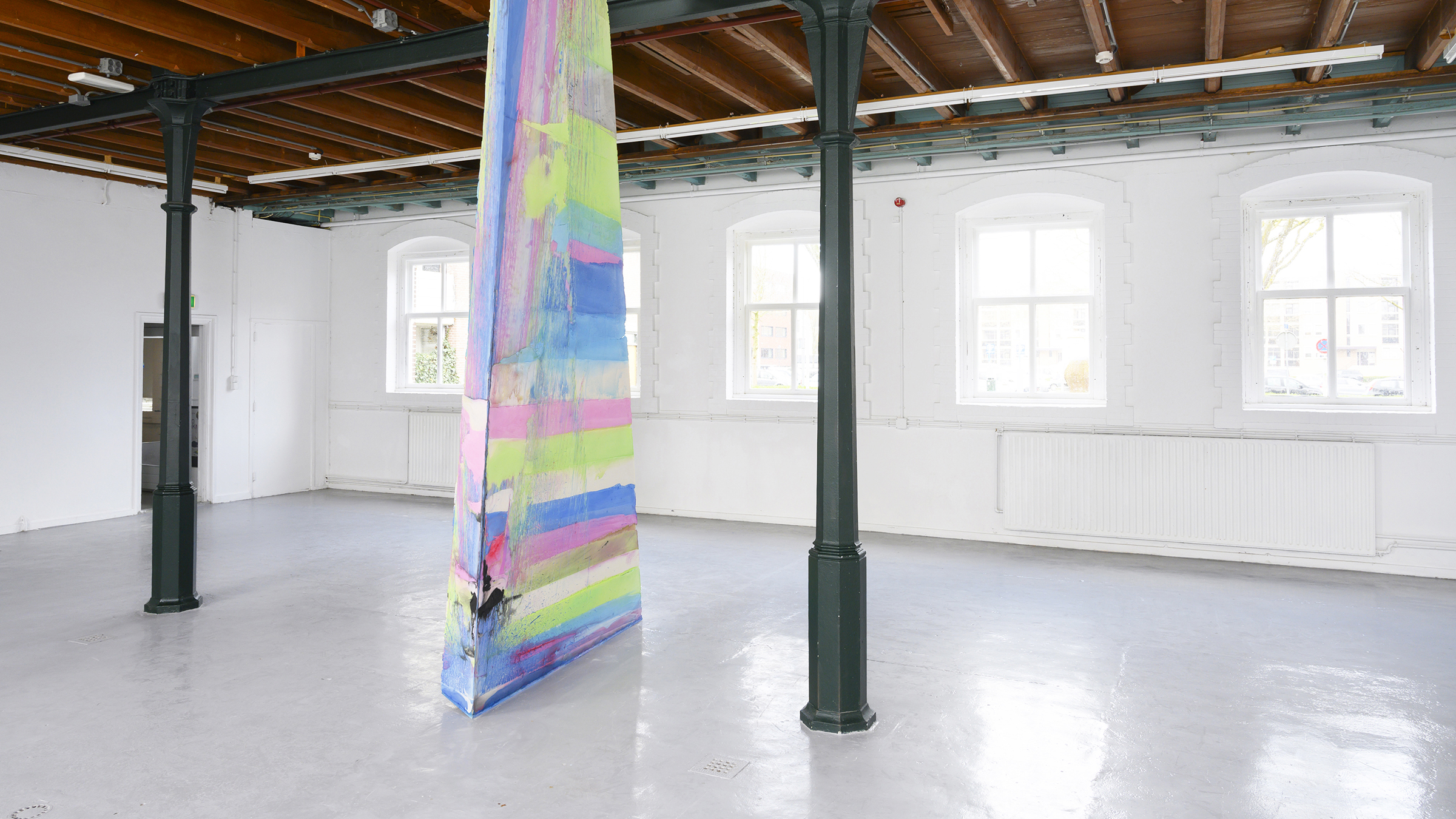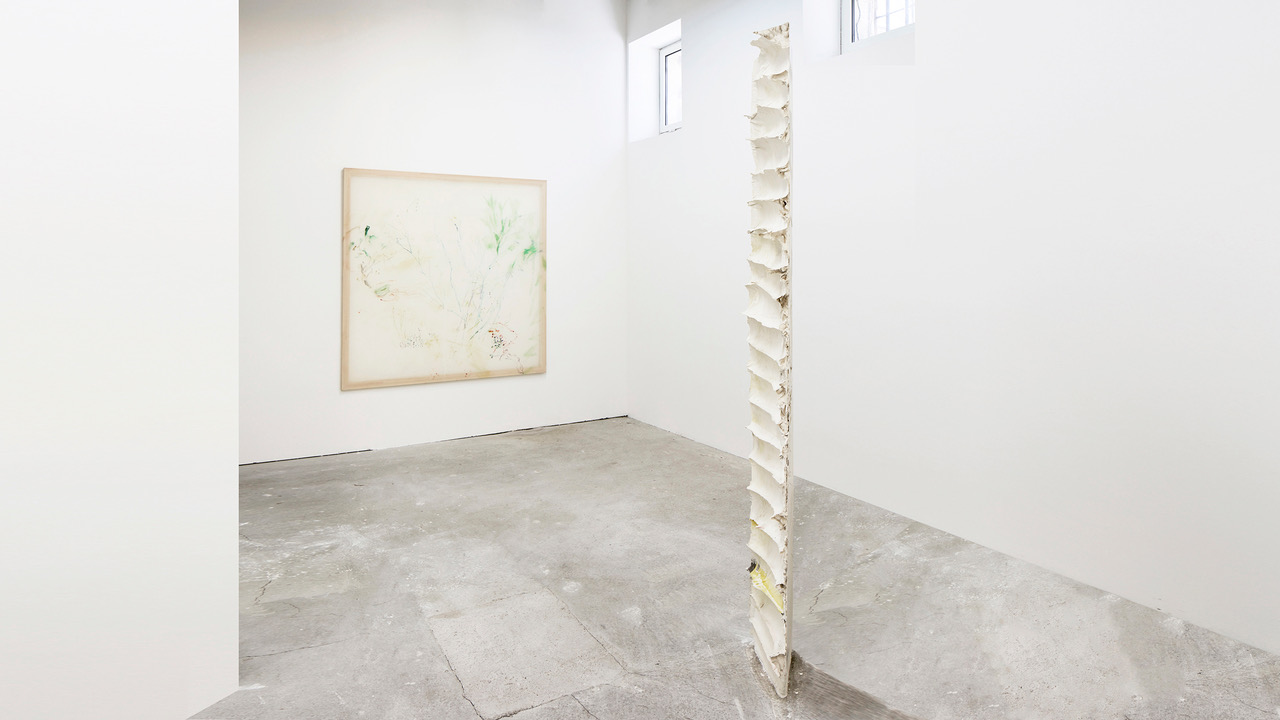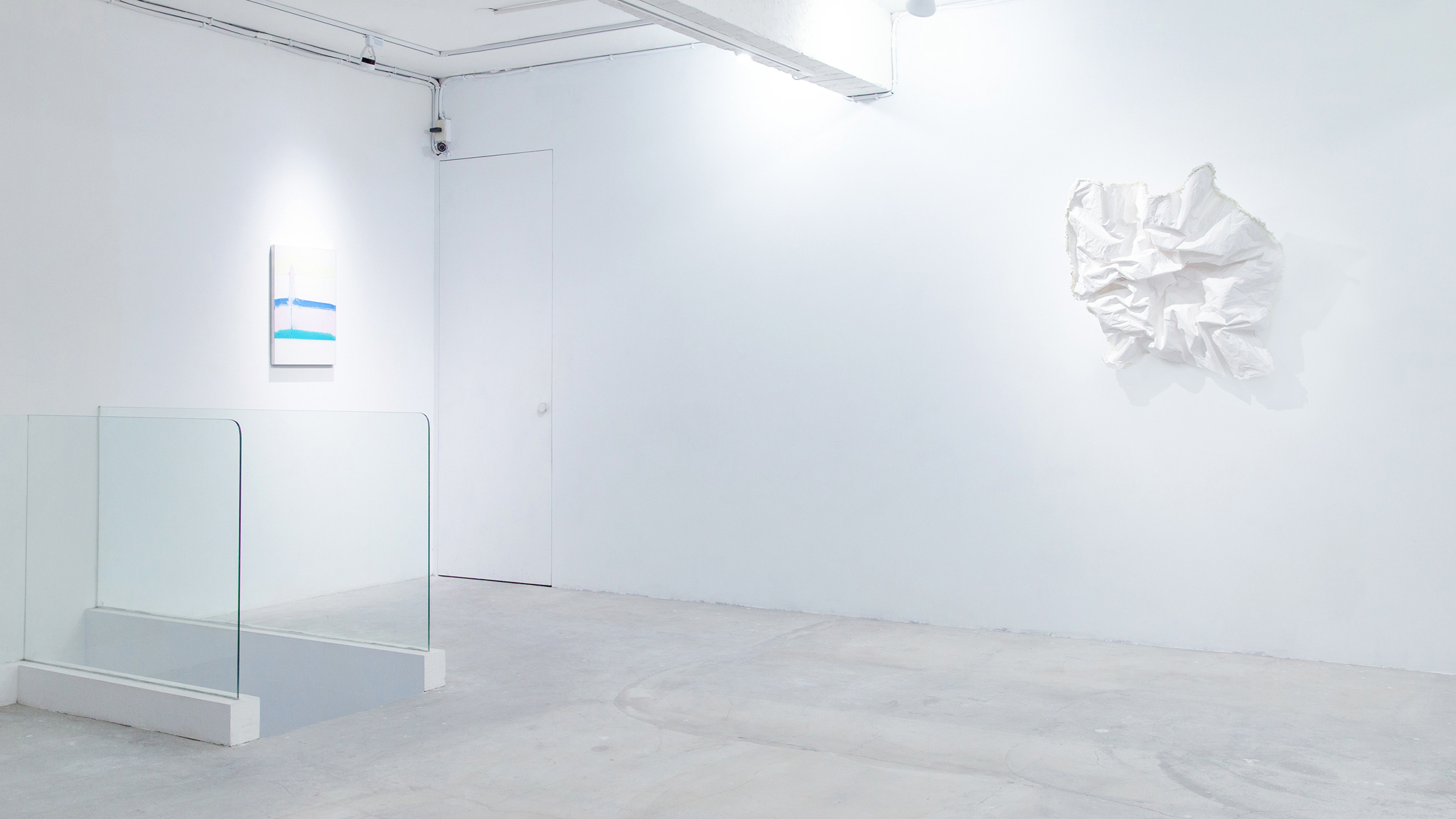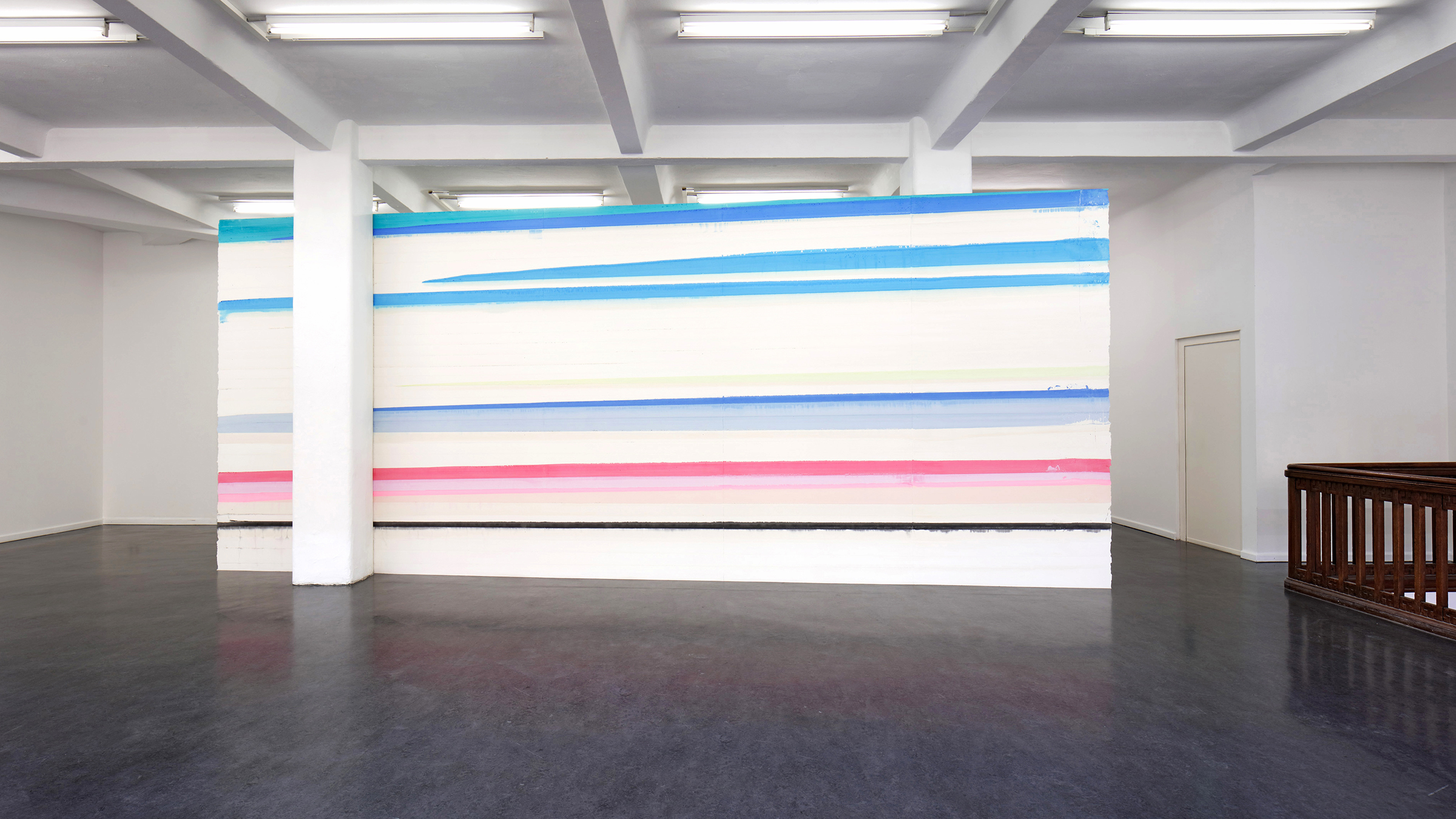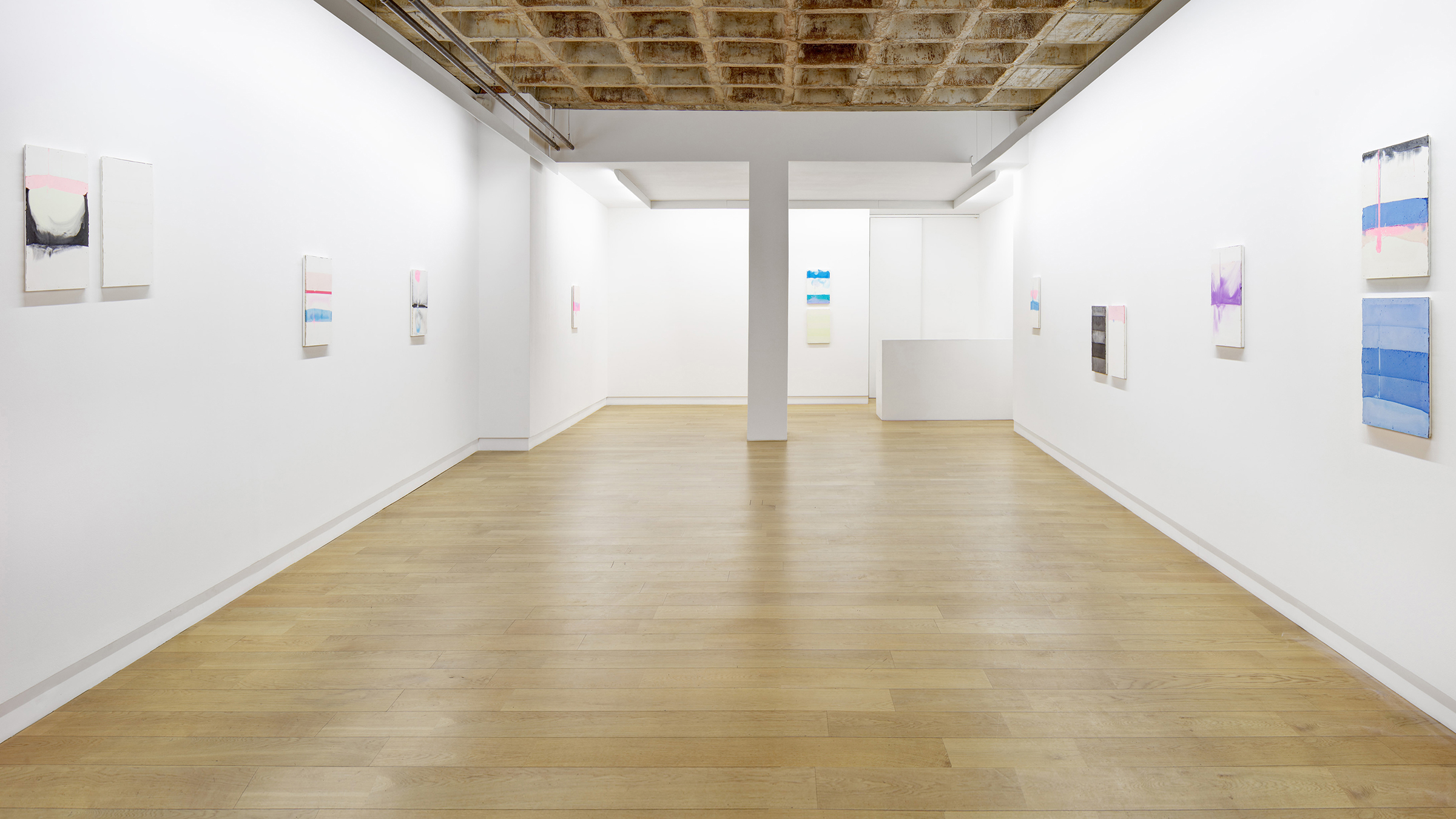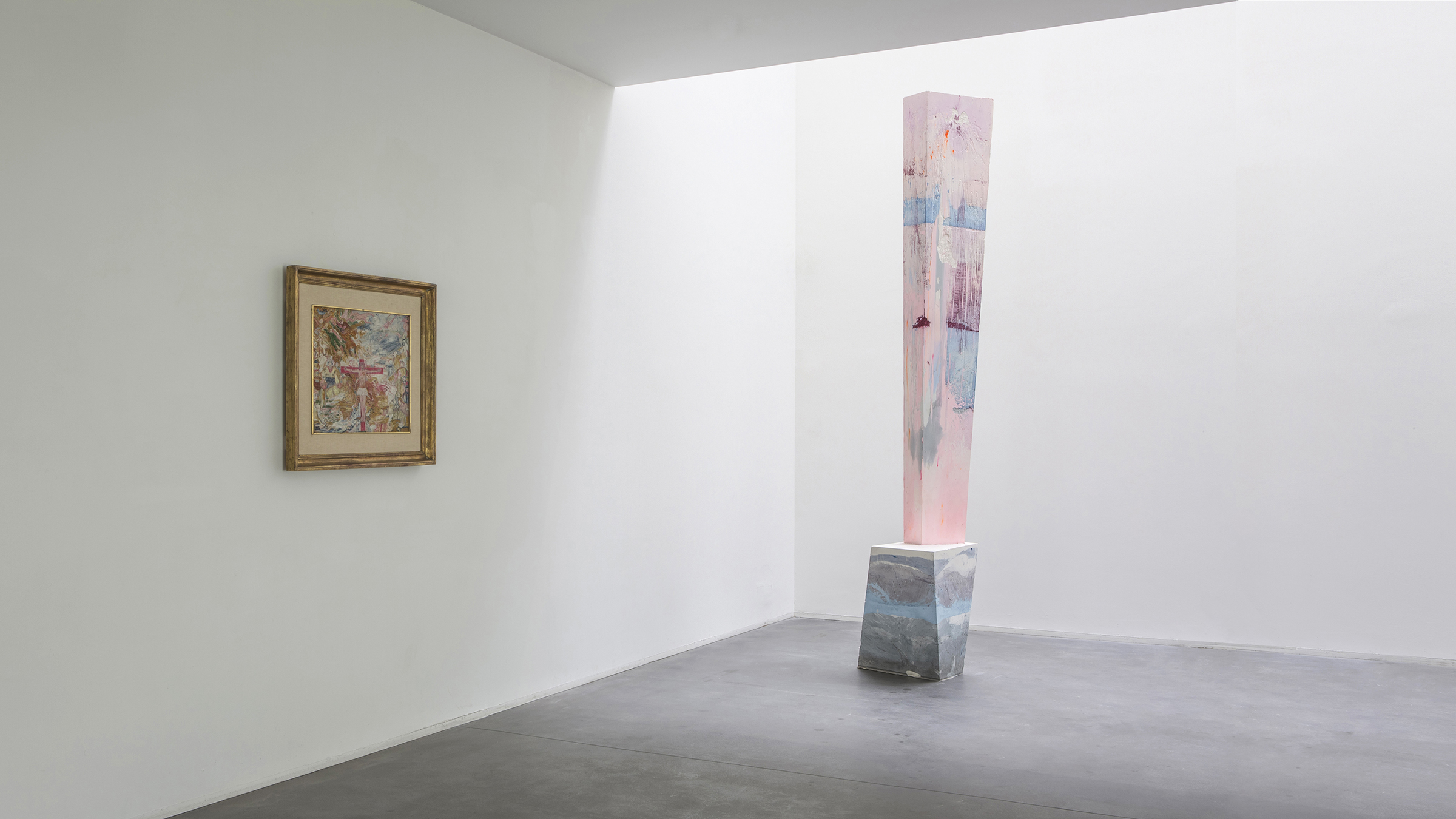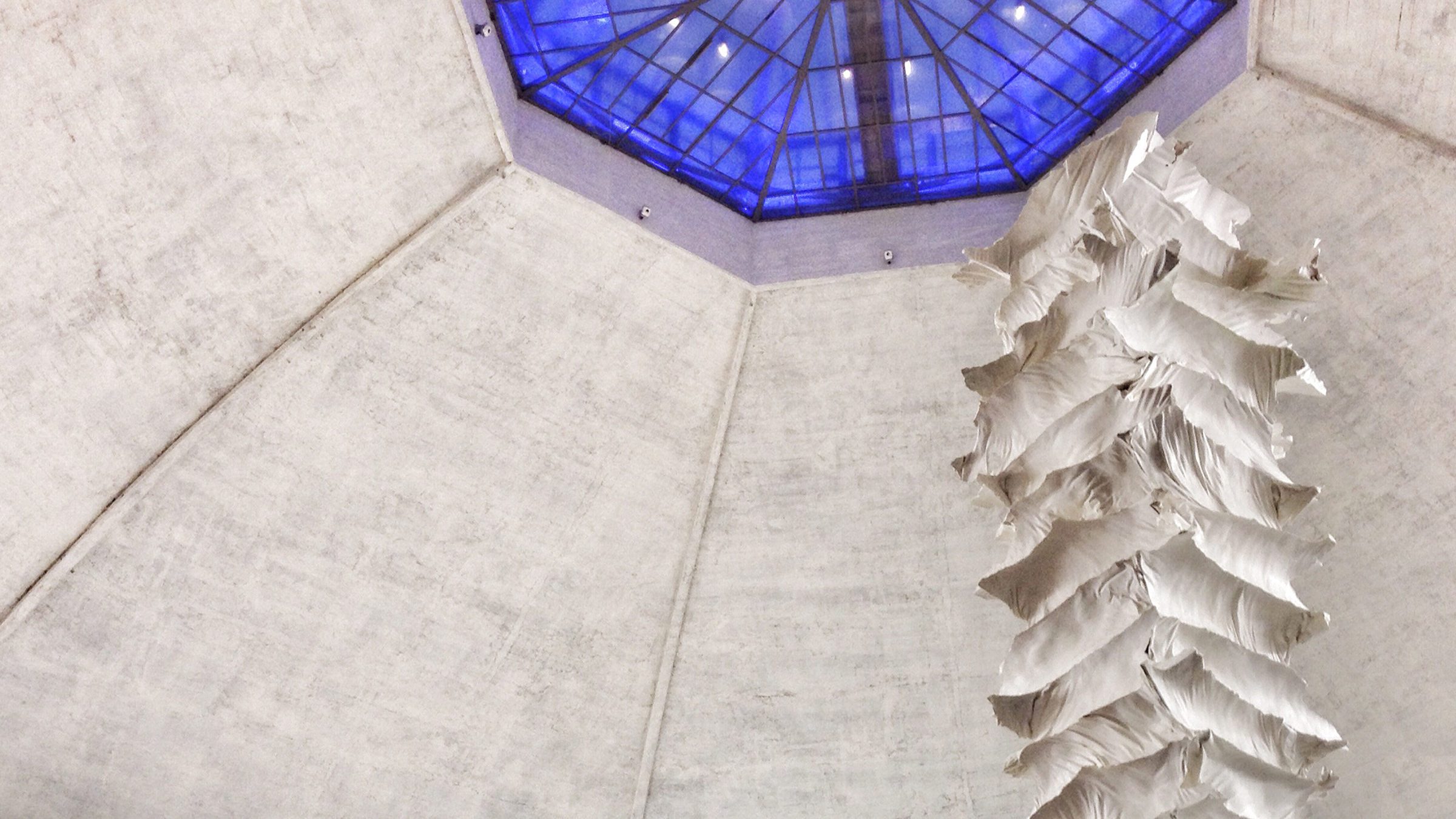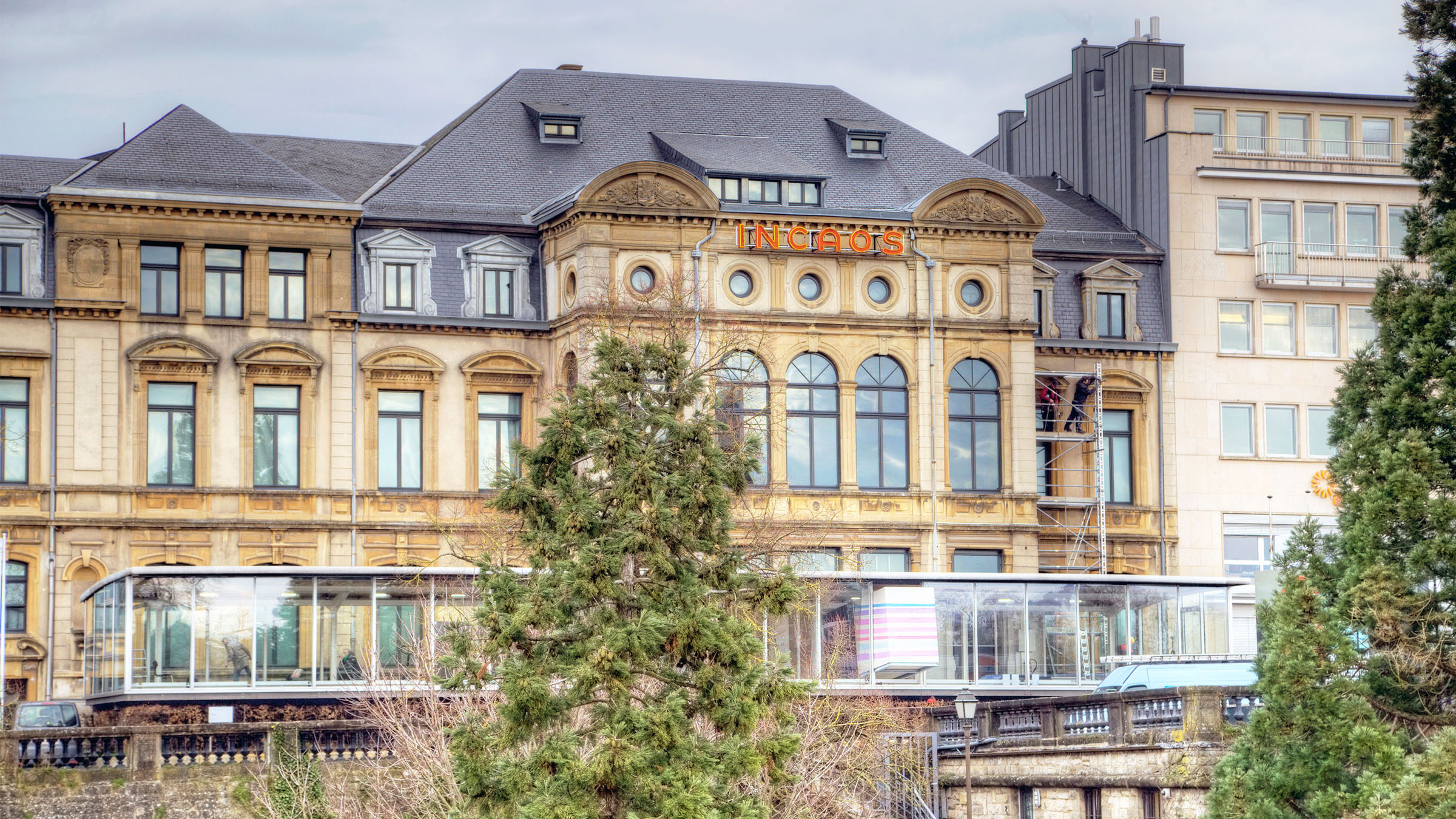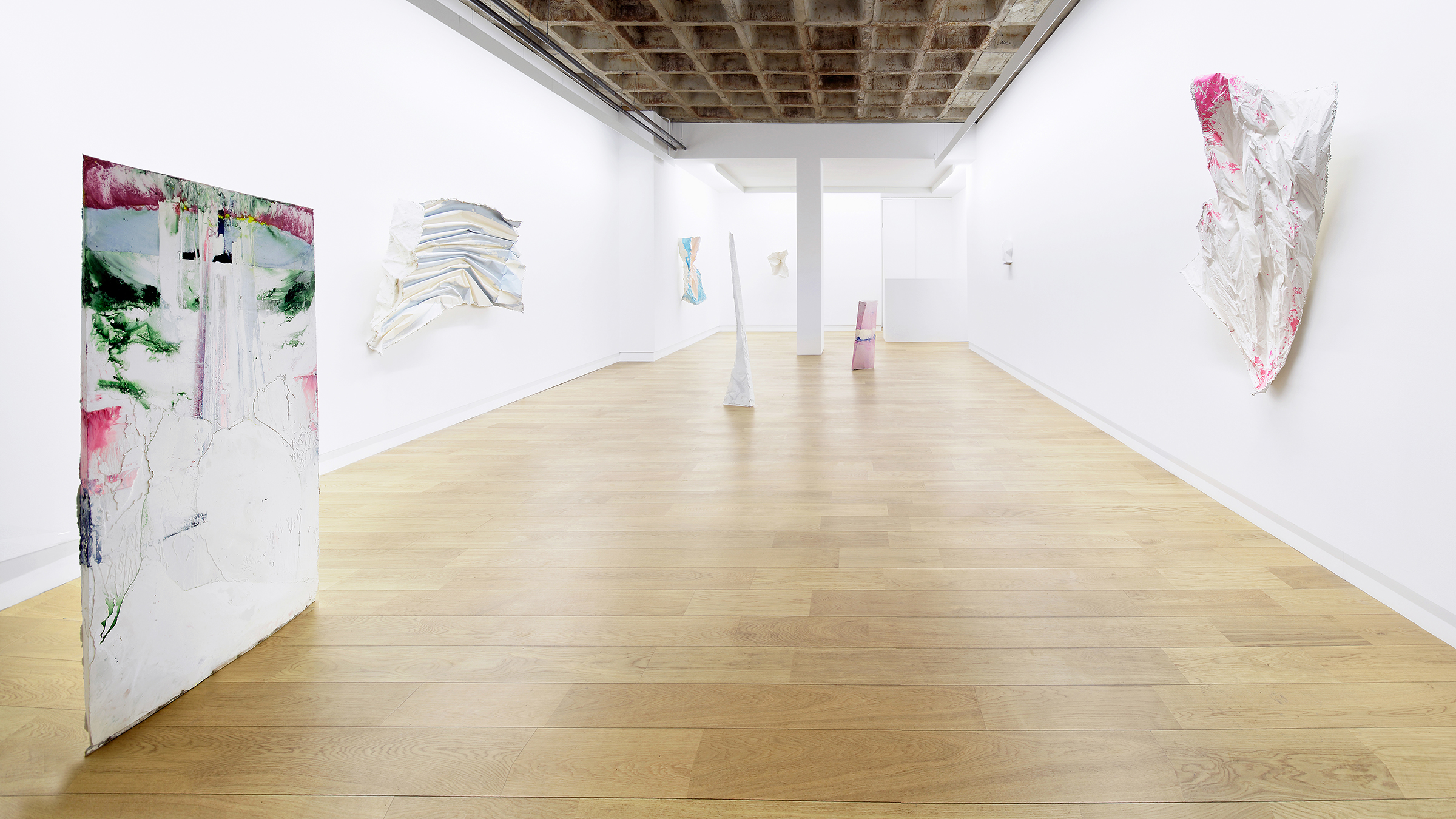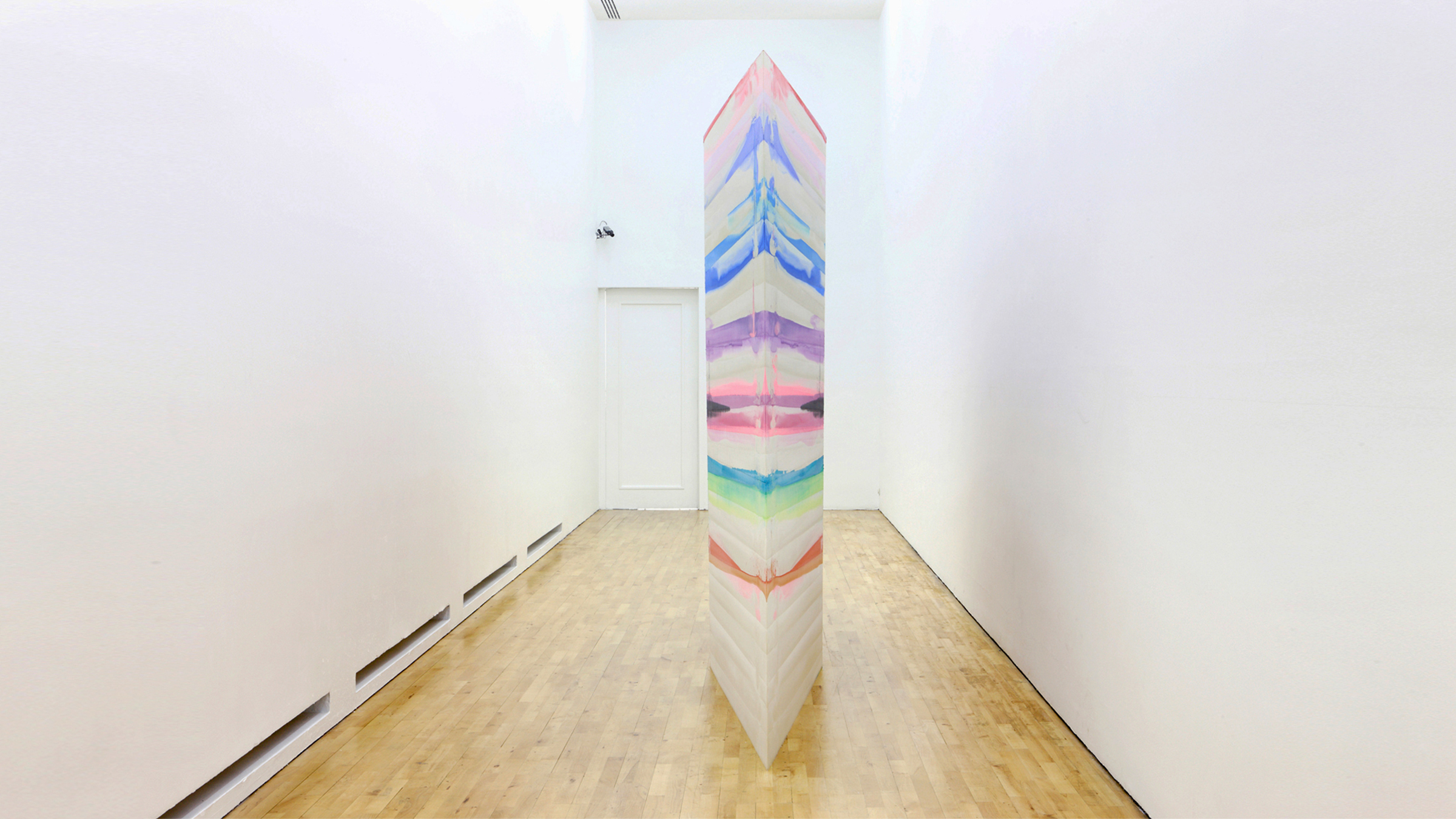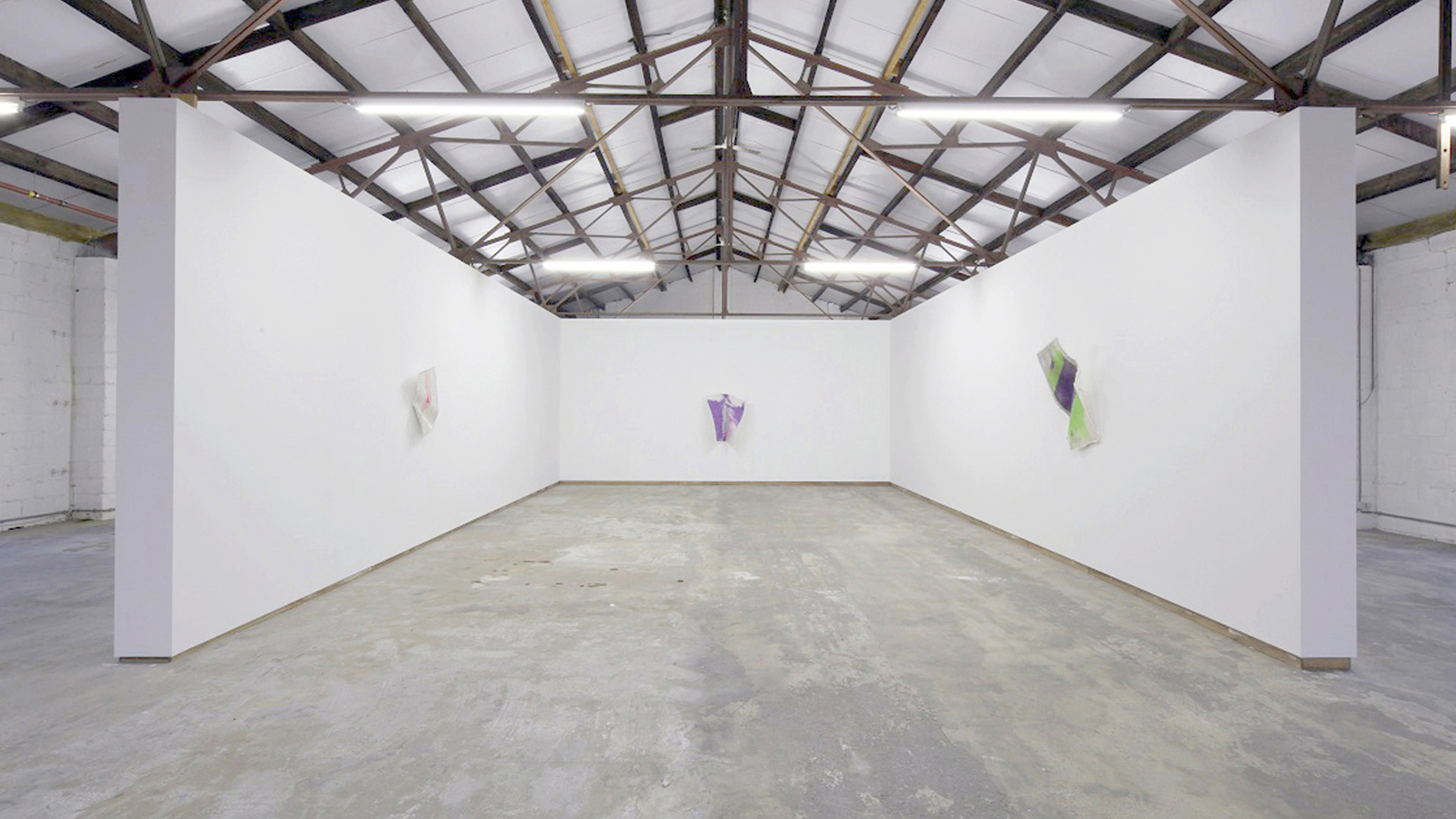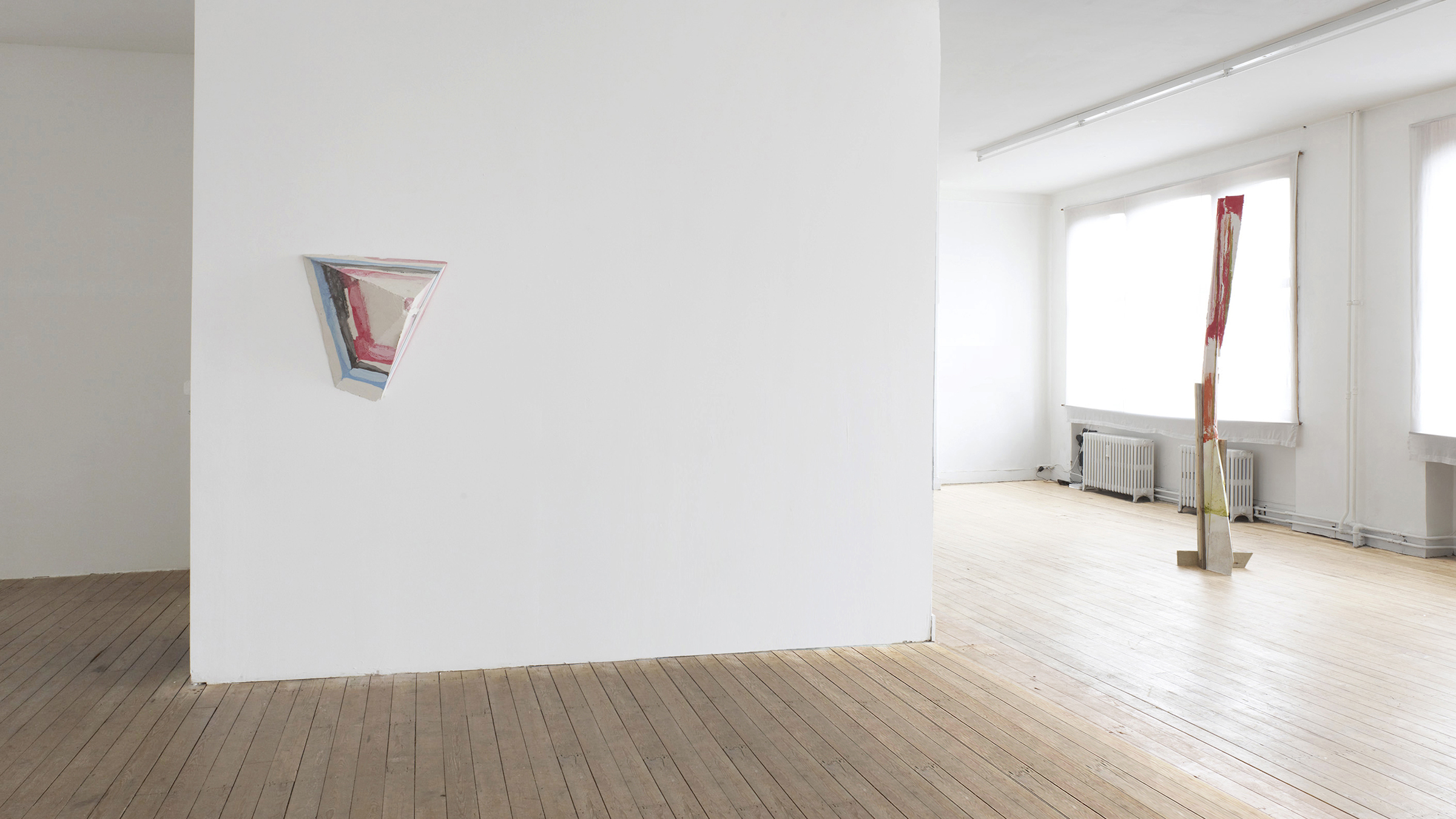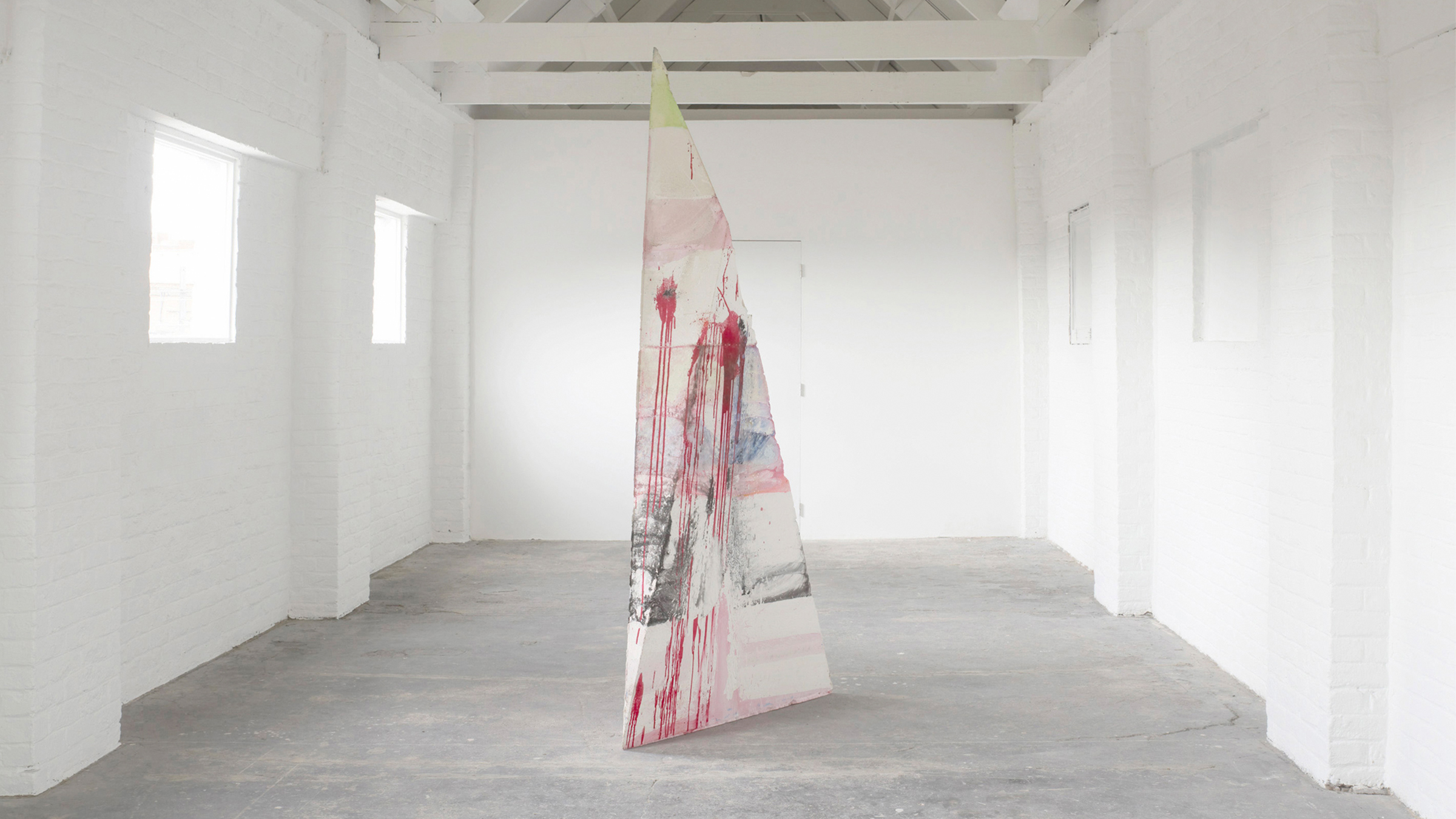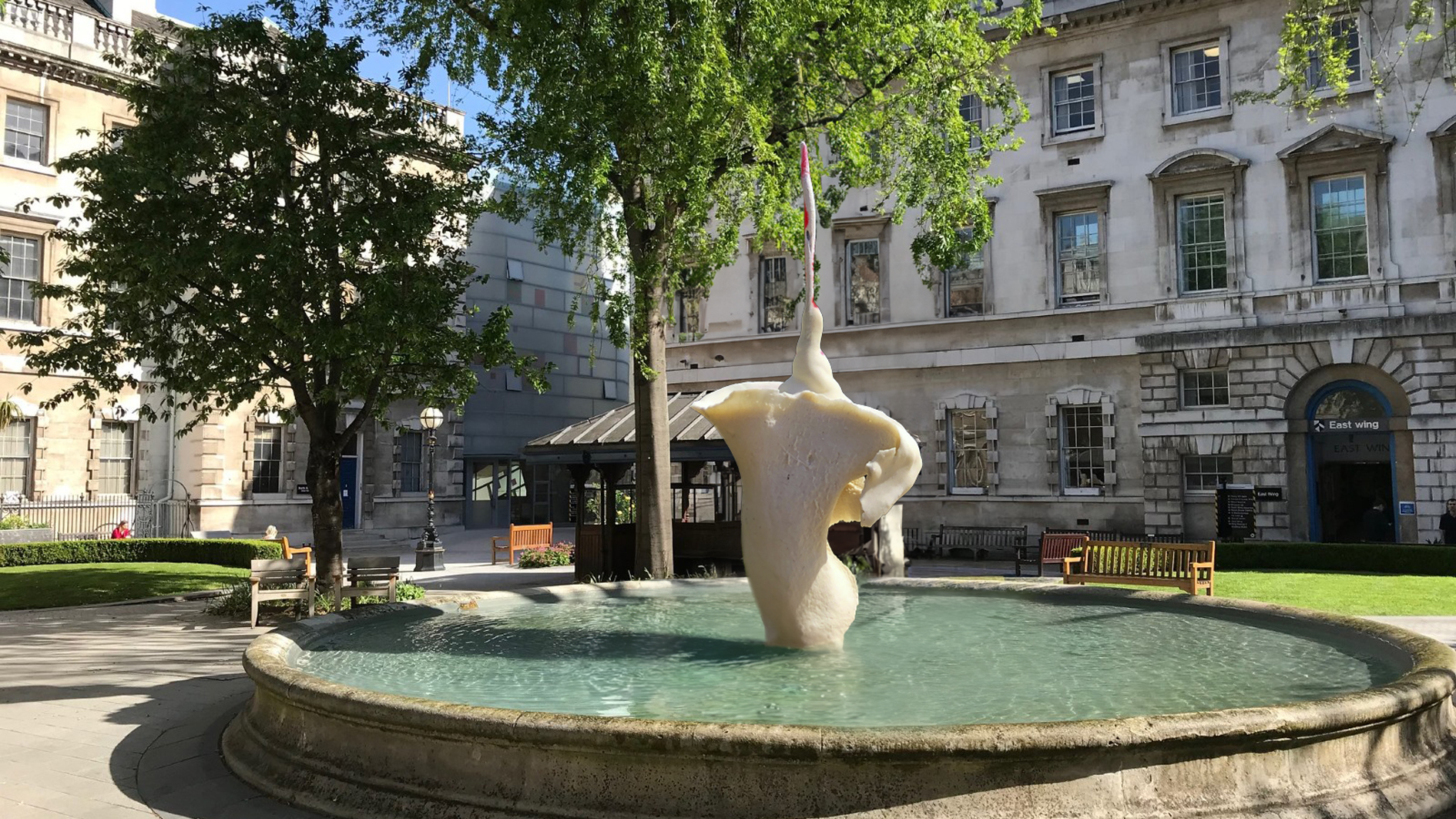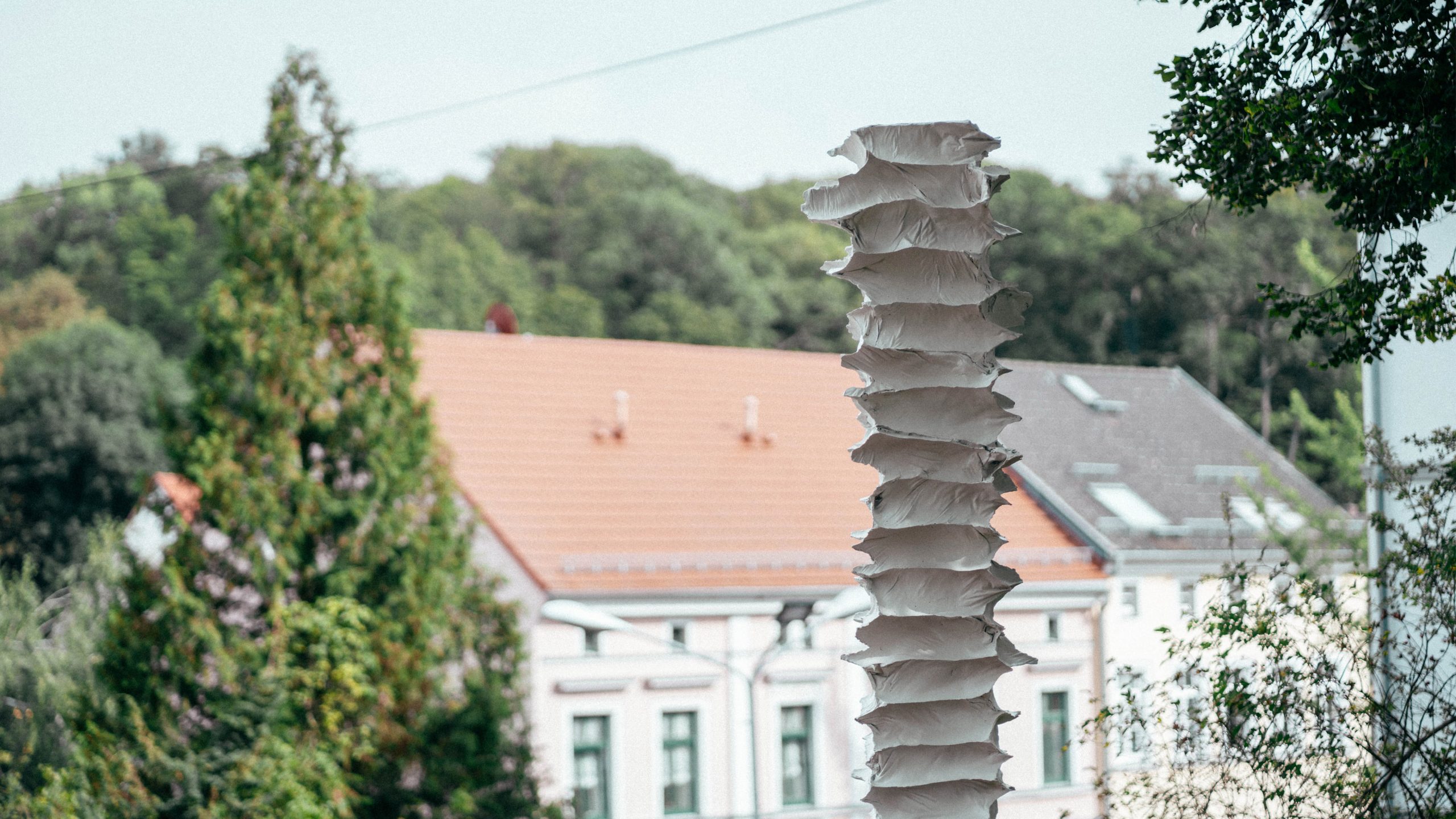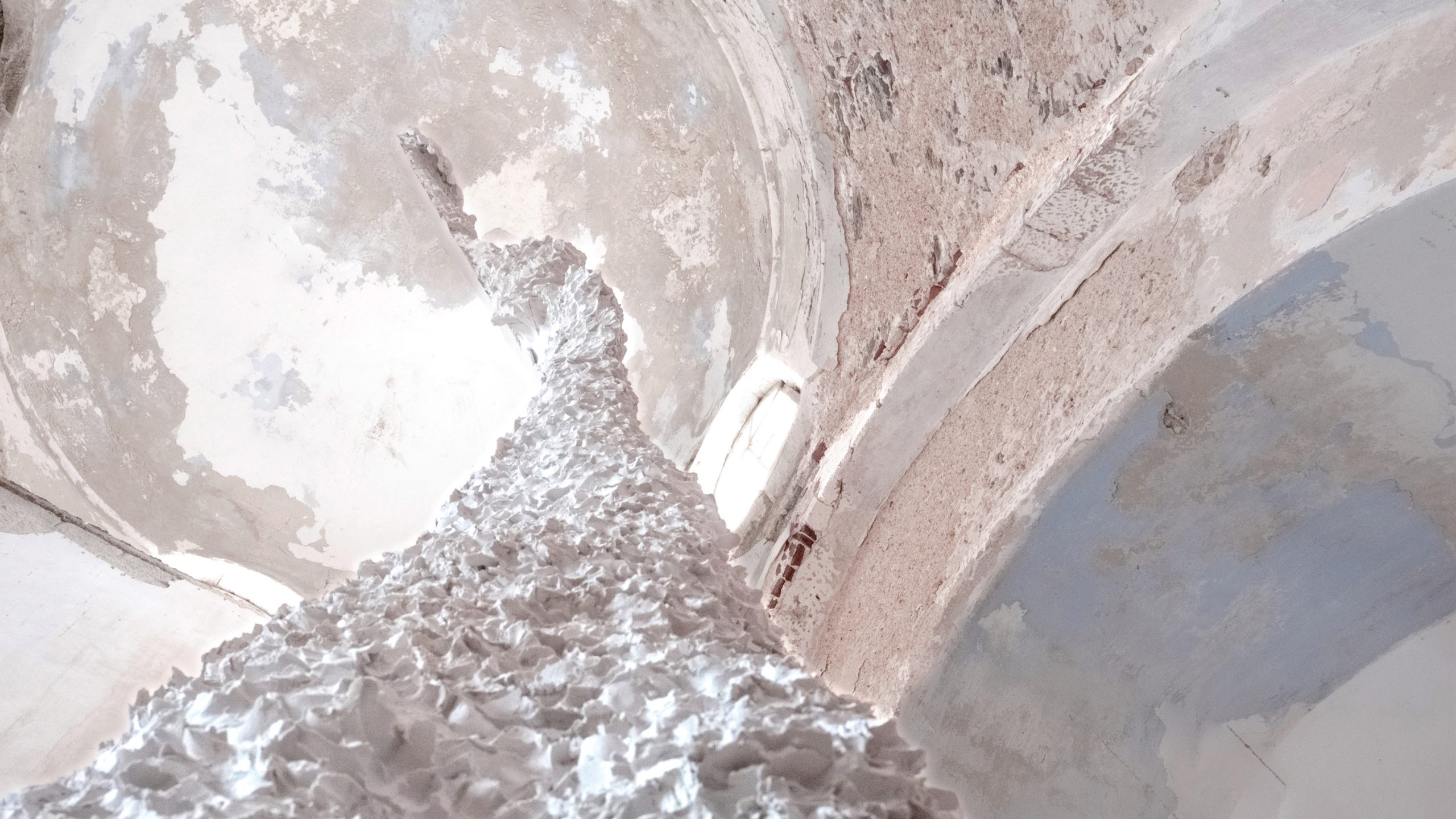Biography
Born in Belgium in 1977, Stijn Ank begins sculpting as a child. Giving stance to matter and giving stance to one’s own life are connected and at the heart of his work.
In 2004, Ank returns to Flanders, the area of his childhood in Belgium, where he begins to discover traces of the archaic and so timeless qualities he found in the Mediterranean. These qualities are subtle, obscured by the muted landscapes and diffuse light of the area. Yet, they resonate within niches, such as the clear precision of the Flemish Primitives.
Around 2007, first process-driven experiments mark the beginning of his distinctive approach to sculpture, that continues to shape his practice to this day.
He works intuitively, creating molds with different materials, that delineate specific spatial boundaries. Into these molds, he pours liquid plaster—a substance derived from seawater salts—mixed with natural pigments sourced from minerals. As the plaster sets, it undergoes a crystallization process reminiscent of coral growth, capturing a tension between fluidity and solidity.
Once the molds are opened, Ank’s sculptures emerge as autonomous worlds, free from figurative reference. They occupy a sensory space that feels both archaic and immediate—a moment suspended before meaning crystallizes. The soft colors, blending with the surface, evoke a primitive purity, recalling both the Flemish Primitives and Mediterranean frescoes, reinforcing the works’ timeless resonance.
His sculptures serve as meditations on the fragile beauty of existence, bearing witness to the cycles of materiality, space, light, and time. Constantly evolving, they reflect the delicate balance between creation and decay, permanence and impermanence.
After nearly two decades of pursuing this intuitive, pre-conceptual process—combined with his thoughtful reflections on art as a way of unfolding a stance in life—his works are now featured in prominent galleries and museums worldwide.

Sculptures
The journey of “learning to stand” — or learning to take a stance — begins with exploring the body’s relationship to space, using earthy materials like clay and plaster. From 2005 to 2008, the work undergoes a cycle of creation and destruction, repeatedly built and stripped down until its recognizable shape disappears and is unable to take a stance any longer.
By 2009, with only space and his own body remaining, the artist creates molds from leftover materials, marking the boundaries of “the body in space” and filling them with pigmented plaster. This process of “filling” and “emptying” results in autonomous creations, remnants of an action, that seem almost to move through the surrounding space.
This is especially the case with Ank’s wall pieces which appear around 2012. Seemingly withdrawing or being sucked into a void, they evoke a sense of both presence and disappearance, capturing the very moment in which this shift occurs—granting them presence in both time and space.
In 2016, through his Al Fresco series, the artist blurs the boundaries between painting and sculpture, focussing on what he describes as an “inner space”. Simultaneously, he experiments with bronze patinas that mirror the surface texture of plaster, culminating in the transformation of his first plaster sculptures into bronze editions in 2017.
Their dimensionality, spatiality, and lightness demonstrate a playful engagement with materials, touching the core of sculptural tradition. The illusion of lightness is achieved while remaining true to both the materials and the shapes they take.
Parallel to his personal evolution, Ank seeks greater flexibility, allowing for increased autonomy. A significant new step in 2020 involves creating molds in clay that bend, collapse, and sometimes even burst. Giving rise to sculptures that unfold through their own journey of realization.
Soon after this revival, in 2021, the artist pushes boundaries by using powder plaster itself as the molding material. The liquid, pigmented plaster which he pours into heaps of powder is now fully free to find its own path. The resulting sculptures take on highly organic, coral-like, living stances. Depending on their inherent subjectivity, they reveal a unique world of their own.
With these new approaches, the importance of size fades. Smaller works arise, which, just like in nature, hold as much presence as larger ones. What matters is the ‘relative size’ of a ‘self-being,’ where size is defined by presence, not dimension.
Stijn Anks process-driven approach — where sculptures grow within ever-changing molds, continuously rediscovering their stance — mirrors our own daily transformations. A search of letting go of control, allowing ourselves to move closer to our own realization, in this elusive, ever-moving life.
Resisting categorization into any specific art movement, his work continues to unfold in unexpected directions.
Frescoes
Fresco painting, which flourished in the fourteenth century—“a fresco” literally means” upon the fresh [plaster]”—is an ancient wall painting technique in which pigment dissolved in water is applied to fresh lime plaster. Chemical processes permanently fix the pigment particles within the plaster. A similar fusion of pigment and plaster also define these works.
Ank’s frescoes navigate a finely tuned balance between painting and sculpture. The process is guided by questions such as: How much or how little volume can a sculpture occupy before it ceases to be spatial? To what extent can sculpture become pure surface, and can surface itself give rise to space? Where does surface end and space begin?
The visual outcome remains inherently unpredictable. Ank constructs casting molds and fills the void with successive layers of liquid, pigmented plaster. He focuses less on compositional choices and more on what he describes as an “inner space” that resonates with the viewer’s interaction with it.
These works explore a literal architecture of pictorial space: the artist is interested in the lacuna behind the canvas, the shallow depth that painting usually obscures when constructing the illusory space of the picture. Here, an essentially sculptural process yields color gradients with a striking painterly appeal.
Drawings
Where sculptures are shaped unseen in their closed moulds, becoming drawn out — the drawings unfold on the open surface, becoming drawn in.
Each line or wash traces a subtle pull between what appears and what absorbs, between presence and disappearance — mirroring our own movement through life, drawn out into the world, only to be drawn in, into being.
Exhibitions
In 2010, Stijn Ank presents his first sculptures in the exhibition Prototypes, introducing his unique practice. For his inaugural solo show at SMAK in Ghent in 2012, he uses the museum space itself as a mold.
This in-situ work, along with pieces reflecting his daily studio practice, speaks a distinctive language characterized by persistence, vibrance, and a poetic spirit, laying the foundation for many significant exhibitions to follow.
These include renowned museums such as: IMMA, Dublin (2025); Kunsthaus Lempertz, Brussels (2024); Le Musée du Louvre, Paris (2022); Academia Belgica, Rome (2020); Club Solo & Vanabbemuseum, Breda (2019); MoCA Museum, Taipei (2017); Künstlerhaus Bethanien, Berlin (2017); Forum d’Art Contemporain, Luxembourg (2014); S.M.A.K., Ghent (2012)
Public Flow
Public Flow is an ongoing sculptural research into the tension between inner fragility and civic scale.
This evolving body of work explores how sculptures can invite stillness, reflection, and openness within the rhythm of urban life.
Visit Us
Stijn Ank works while traveling and maintains a base in Belgium, which includes an artist residency near Brussels and a studio near Ghent. The residency, established between 2004 and 2008, serves as an anchor—a sculpted, archaic fold in the landscape.
Both the studio and residency are open to visits by appointment.

